Archived Blog Posts
Why You Need a Hygienist to Detect Mold in Your Home or Workplace
5/10/2023 (Permalink)
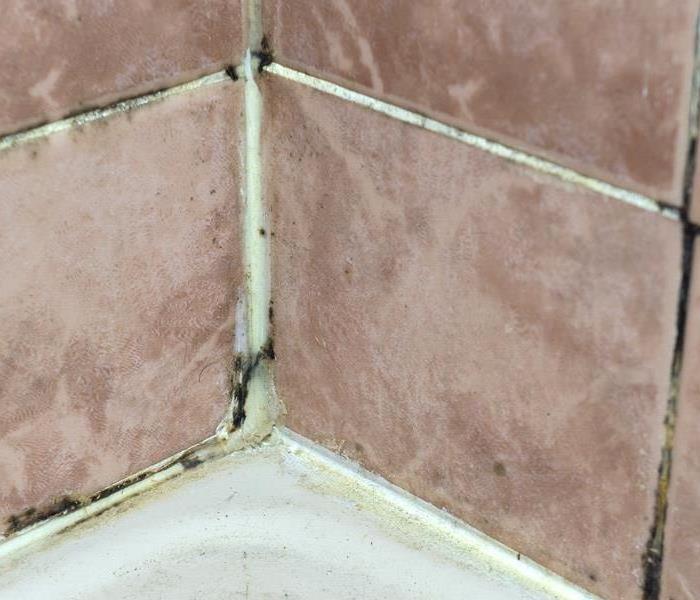 A hygienist is necessary for mold detection.
A hygienist is necessary for mold detection.
Mold growth in your home or workplace can cause problems if left unchecked. Mold spores can cause issues, so it's important to identify and remove mold as soon as possible. While some mold growth may be visible, other hidden mold can go undetected. This is why you may need a hygienist to check for mold. In this blog, we'll explore the reasons why a hygienist is necessary for mold detection.
What is a hygienist?
A hygienist is a professional who specializes in environmental health and safety. In the context of mold detection, a hygienist is trained to identify mold growth, assess the extent of the problem, and determine the best course of action to remediate the issue. They have the knowledge and expertise to evaluate indoor air quality, moisture levels, and ventilation systems.
Proper Identification
Not all mold is visible, and it can grow in hard-to-reach places. A hygienist has the necessary tools and expertise to detect mold growth that may be hidden from view. They use specialized equipment such as thermal imaging cameras, moisture meters, and air samplers to identify mold growth accurately.
Objective Assessment
A hygienist can provide an objective assessment of the extent of the mold problem. They can identify the type of mold present and determine the potential risks associated with it. This information can help you understand the severity of the problem and make informed decisions about the remediation process.
Remediation Plan
A hygienist can provide a detailed remediation plan that outlines the steps required to remove the mold safely and effectively. This plan will include the type of cleaning and disinfection required, the necessary protective gear for the workers, and the disposal of contaminated materials.
Clearance Testing
After the mold remediation process is complete, a hygienist can conduct clearance testing to ensure that the mold has been properly removed. Clearance testing involves air and surface sampling to confirm that mold spores are no longer present.
In conclusion, mold growth can cause serious issues if not addressed properly, and it's important to identify and remove it as soon as possible. A hygienist is necessary for mold detection because they have the expertise and tools to accurately identify mold growth, provide an objective assessment of the problem, develop a remediation plan, and conduct clearance testing. If you suspect mold growth in your home or workplace, it's essential to hire a certified hygienist to ensure that the mold is properly identified and removed.
Lint Be Gone: A Step-by-Step Guide to Cleaning Your Dryer Vent and Improving Safety
4/10/2023 (Permalink)
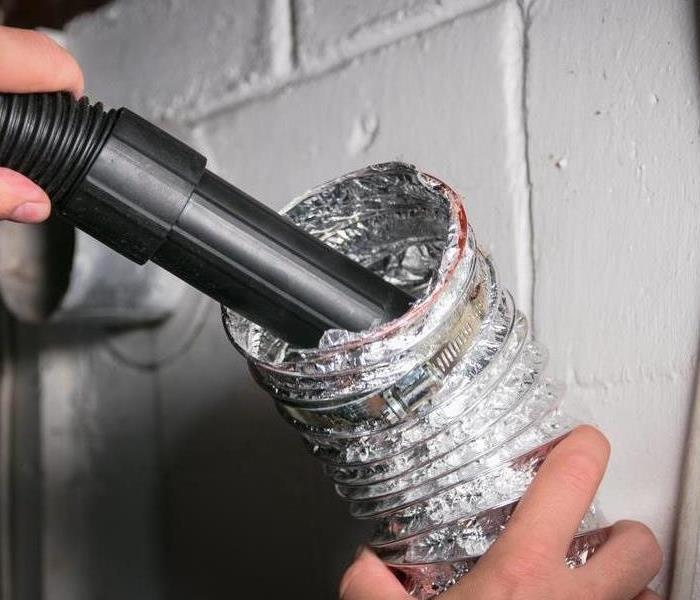 SERVPRO can help clean your dryer vent and prevent potential fires
SERVPRO can help clean your dryer vent and prevent potential fires
As a homeowner, it's important to take care of your appliances to ensure they are functioning properly and safely. One appliance that is often overlooked when it comes to maintenance is the dryer. Specifically, the dryer vent is an important component that should be cleaned regularly to prevent potential hazards. In this blog, we'll discuss when you should clean your dryer vent and the benefits of doing so.
First and foremost, it's important to understand what the dryer vent does. The dryer vent is responsible for removing hot, moist air from the dryer and directing it outside. Over time, lint and other debris can build up in the vent, causing it to become clogged. This can lead to a number of hazards, including fire, carbon monoxide poisoning, and reduced efficiency of the dryer.
When should you clean your dryer vent?
The answer depends on a few factors. As a general rule of thumb, it's recommended to clean your dryer vent at least once a year. However, if you notice any of the following signs, it may be time to clean your dryer vent sooner:
- Your clothes are taking longer to dry than usual.
- You notice a burning smell when the dryer is running.
- The outside of the dryer feels hot to the touch.
- You see an excessive amount of lint accumulating around the outside vent.
If you notice any of these signs, it's best to clean your dryer vent as soon as possible to prevent any potential hazards.
There are a few benefits to cleaning your dryer vent regularly. The first is increased safety. A clogged dryer vent can lead to a fire damage in your home. Regular cleaning can prevent these hazards and keep your home and family safe.
Improved efficiency
Another benefit of cleaning your dryer vent is improved efficiency. When the vent is clogged, the dryer has to work harder to dry your clothes, which can increase your energy bills and reduce the lifespan of your dryer. Cleaning the vent can improve the efficiency of the dryer, saving you money in the long run.
Air Quality
In addition to these benefits, cleaning your dryer vent can also improve the air quality in your home. When the vent is clogged, it can lead to a buildup of mold and other allergens, which can exacerbate allergies and other respiratory problems.
In conclusion, it's important to clean your dryer vent regularly to prevent potential hazards and improve efficiency. As a general rule of thumb, it's recommended to clean your dryer vent at least once a year. However, if you notice any signs of a clogged vent, it's best to clean it as soon as possible. Regular cleaning can increase safety, improve efficiency, and improve air quality in your home. Give SERVPRO a call to help clean your dryer vent and prevent future fires to your property.
How To Care For Your Belongings After Water Damage
3/14/2023 (Permalink)
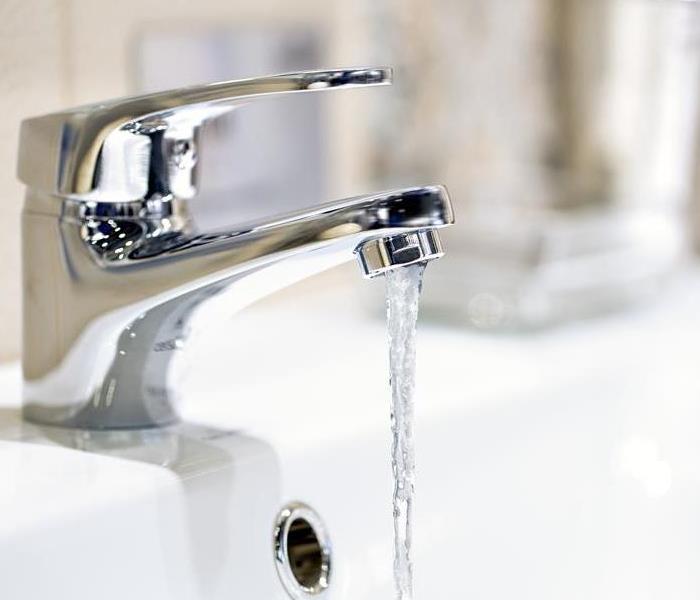 Water damage can leave you feeling hopeless, give SERVPRO a call today!
Water damage can leave you feeling hopeless, give SERVPRO a call today!
Water damage can be devastating to your belongings and home. When flood waters recede, you might find yourself with some musty furniture, a mildewed carpet, damaged books, or even worse: mold. But there's no need to panic—there are plenty of ways to restore your belongings after they've been exposed to water.
Dispose of items that are ruined
It is not an easy task to complete, but it is important to sort through all of your affected belongings and determine if the belongings are ruined or not. Once you have determined what items are ruined, it's time to dispose of them.
Disposing of items that have been damaged by water can be a challenge. To avoid mold growth or further damage, you need to keep the affected belongings isolated from other items until they are properly cleaned and dried. The best way to do this is by putting the ruined items in plastic bags--you can even seal them with tape if needed--and storing them in a dry place with good ventilation until they can be taken away for disposal.
Air-drying
If your items are wet after a loss, try air-drying your belongings indoors. Open windows to create a natural airflow or use fans to circulate the air throughout your home. You can also dry items in a garage or other dry areas if necessary.
Air drying is usually safe for most materials, but there are still some things you should avoid doing while they're drying:
- Don't expose wet clothing or bedding directly to heat sources like radiators or heaters until they're completely dry.
- Avoid hanging up wet clothes on hooks; instead lay them flat on a surface like carpeting so they don't stretch out of shape as they dry.
Gently clean
If your belongings have been affected by a water loss, there is no surprise that the items might be dirty. The first thing to do is to gently clean the affected items with a cloth or a soft brush. Don't use a pressure washer, steam cleaner, or harsh chemicals. This can cause more damage and make it harder for you to get your belongings back in good condition.
If you have books, albums, or photos that have been damaged, do not attempt to clean them with a soft brush or cloth, this could cause more damage. Instead, allow restoration professionals, such as SERVPRO of Lake Conroe, to clean and repair those items for you!
Call a restoration professional for help
If your belongings have minor water damage, it might be possible to clean the items on your own. If the damage is more severe, don't try to clean them yourself. The best way to restore those belongings is with the help of a professional restoration company. They can help you with drying out items, cleaning them, and disposing of those that cannot be saved. Water damage restoration companies use advanced technology to clean, sanitize, and restore your damaged belongings as much as possible so that it looks like new again!
There are things you can do to avoid further harm to your belongings.
If you have water damage in your home, there are things you can do to avoid further harm to your belongings. If possible, remove all wet items from the area and place them in a safe place. You may want to consider hiring professionals who specialize in drying out homes after a flood or storm has occurred.
If you don't have the time or tools for this process yourself, call a restoration company for content restoration services.
We hope that this guide has helped you understand the process of restoring your belongings after a water damage incident. Water damage can be devastating, but with the right knowledge and tools, you can make sure it doesn't ruin your life!
Potential Kitchen Hazards
2/16/2023 (Permalink)
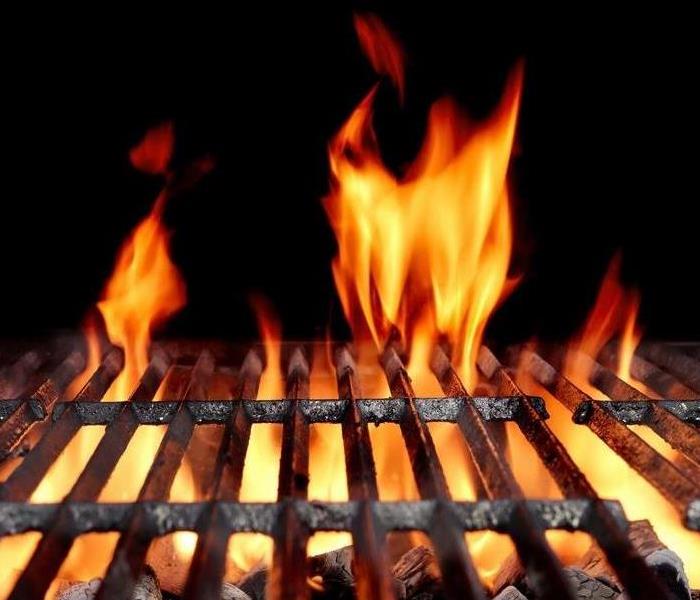 When your in need of fire restoration cleanup, give SERVPRO of Lake Conroe a call today!
When your in need of fire restoration cleanup, give SERVPRO of Lake Conroe a call today!
If you're in charge of your kitchen, you know how important it is to keep an eye out for potential hazards. You don't want to have a fire or any other kind of emergency situation that will force you out of your home. There are many things that can go wrong in kitchens from grease fires to faulty appliances There's plenty of room for disaster if you're not careful. However, there are also many easy ways to prevent these problems from occurring at all.
Dirty floors
Cleaning your kitchen floor is an important part of preventing a slip and fall accident. Dirty floors are a common cause of slips and falls, so it's important to keep your kitchen floor clean at all times.
Clean up spills immediately before they have time to dry and stick to the floor. If you can't clean up the spill immediately, use something absorbent like paper towels or a sponge to soak up as much liquid as possible.
Food on the Stove Unattended
A fire hazard is something that could ignite and spread flames. In the kitchen, this can be caused by leaving food unattended on the stove or in the oven. You might think that you'll only be gone for a few minutes, but it doesn't take long for something to get out of hand. For example, if you leave bacon frying without checking on it every few minutes and it burns instead of browning.
Combustible Cooking Materials
If you're still using a gas stove, it's important to know that combustible cooking materials can be flammable. This means they can catch fire and, if left unattended, start a fire without any outside help.
The most common materials in this category are paper products such as napkins and paper towels, kitchen towels Other common combustible cooking materials include wood chips for smoking meats, wicker baskets for use with hot food items like fried chicken wings or French fries, and wooden spoons or spatulas used for stirring foods on the stovetop.
Grease fires
Grease fires are the most common type of kitchen fire. In fact, these types of fires account for about two-thirds of all deaths related to home cooking.
Grease fires can be caused by cooking or heating, but also by using a candle or match as a light source. They can spread quickly and cause serious damage if left unattended. Keep your kitchen clean and organized so that grease doesn't build up on your stovetop or in other places where it could start a fire.
Broken Dishwasher Seals
Dishwasher seals are an important part of your dishwasher. They keep water and food particles from getting into the motor, but over time they can wear out and break. Dishwashers can cause water damage which could leave you without.
Bad Ventilation System
A ventilation system in your kitchen should be designed to remove smoke and fumes from the kitchen. In addition to this primary function, it should have the ability to prevent backdrafts, carbon monoxide poisoning and fire.
The best way to prevent all these things is by maintaining your smoke alarm system regularly. This will ensure that you can quickly respond if there’s ever a problem with your ventilation system or any other safety feature in your home.
Poor Lighting
Poor lighting can cause accidents, injuries, falls and burns. Poor lighting can also result in damage to your eyes and skin. Accidents may happen if there is not enough visibility in the room, which can cause trip and fall hazards leaving you with injuries.
Use the following tips to help prevent kitchen hazards in your home or business. Ensure you area is safe and secure for yourself or employees.
Tips for Sheltering in Place During a Hurricane
1/9/2023 (Permalink)
 Check your local TV stations for urgent updates on the storms status
Check your local TV stations for urgent updates on the storms status
Hurricane season is no time to mess around. A shelter-in-place hurricane plan can help you stay safe if you get caught in a storm. Here are some steps you can take to make sure your family is prepared for what's ahead:
Check and Charge Batteries
The first thing you should do is make sure your battery-powered devices are fully charged. This includes a battery-powered radio or television, phone charger and lantern, flashlight, and radio.
Have a Plan for Charging
Knowing what you can do to charge your devices before the hurricane hits is crucial. Have a plan for charging your devices as soon as it's safe to do so, and know where you can charge them.
If there is no power, have a backup plan for charging your devices in the event of an outage. You may need to use car batteries or generators to create a power source for these devices.
Make Sure You Can Receive Timely Alerts
There are several ways to get the latest news, alerts, and weather information during a hurricane:
Check your local radio stations for updates.
Check your local emergency alert system (EAS). Some areas use EAS to broadcast emergency messages, such as evacuation notices or shelter-in-place directions.
Check your local TV stations' websites and social media feeds for urgent updates on the storm's status and its impact on your area. You may also want to consider subscribing to email newsletters from these sources so you don't miss any important announcements when they're made.
Read the latest news online via online newspapers, which usually have dedicated hurricane coverage teams that work around the clock during major storms or natural disasters like floods or wildfires to bring their readers up-to-date information about what's happening with each one without having them constantly checking back every five minutes throughout those events just waiting for something new because nothing was happening before but now there is!
Stay Up To Date
In the event of a natural disaster, it's important to be prepared and stay informed. Listen to battery-powered radio or television for information on shelter locations, evacuation routes, and emergency relief efforts. You may lose power during the storm or have problems with your cell phone service after the storm passes.
If you have difficulty locating a new shelter location or don't know where you will go after your home is flooded, listen to local radio stations and check local news websites for updates.
Have Cash on Hand
If the storm is especially bad, you won't be able to rely on the ATM for your financial needs. Make sure you have some cash on hand before the storm hits in case there are no ATMs when things get back to normal again.
Cash will be necessary for buying food, water, and other supplies. It’s also helpful if you need to pay for emergency repairs or services after a natural disaster strikes—you can use cash as payment with local contractors while waiting for insurance companies to reimburse you later.
Seeking Shelter
If you are in a high-risk area and have time before the storm hits, identify one or more safe rooms in your home. The most important criterion for a safe room is that it is on the first floor and has no windows. If you have an interior stairway, it’s also ideal to include this as part of your sheltering plan—the top of the stairs should be well above flood levels if there is water damage to your house.
If you are in a two-story home, seek shelter on the lowest floor.
- Stay away from windows. If your house has a basement and/or storm cellar, move there quickly. If not, find a room with no windows or glass doors that can be closed.
- Check for loose objects such as lawn furniture or patio furniture that could fall on someone during high winds or falling debris. Also, look out for hanging pictures that may become dangerous projectiles if they break loose from their hooks on walls or ceilings (and don't forget to remove any valuable items).
- Find a room where you can get to the bathroom easily if necessary.
Be Prepared
The best way to prepare yourself is by learning what needs to happen before, during, and after the storm hits your area so that when the time comes you'll know exactly what steps need to be taken and how to do them.
We hope that these tips will help you prepare for the next hurricane. Remember to stay safe and give SERVPRO of Lake Conroe a call if your Conroe,TX home is hit by a hurricane.
How Long Does a Landlord Have To Fix a Mold Problem?
12/19/2022 (Permalink)
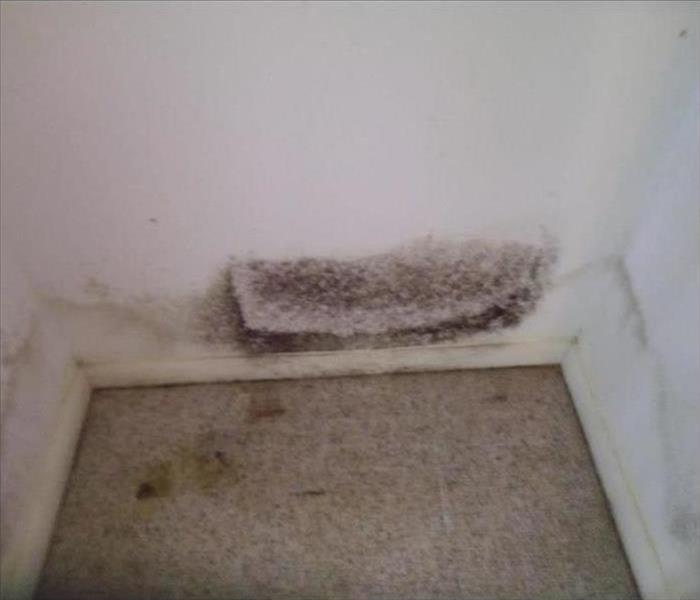 Mold damage in a Conroe,TX home
Mold damage in a Conroe,TX home
When you first move into a new place, it's important to check for mold. Mold can form easily in buildings with poor ventilation and low humidity, which is why it's so common in small apartments or homes with no air conditioning. If you notice mold growing in your home, you should immediately inform your landlord or building management company so they can take action to fix the problem. But how long do they have to respond? And what happens if they don't do anything at all?
Landlord Responsibility
In general, the landlord is responsible for any mold growth caused by a defect in the property. If there had been a leaky pipe and water has gotten into the wall and caused a mold problem, then it will likely be the landlord's responsibility to fix that problem. If there was no leaky pipe but rather someone who lived in another apartment had tracked in mud from outside and tracked it onto your floor mat where it dries out and grows, then that would likely not be considered an issue for which your landlord should take responsibility because it occurred outside of their control (i.e., due to someone else's actions).
Expect Reasonable Action
The law requires landlords to take all reasonable steps to control and abate the mold. If they fail to do so, you can sue them for any resulting damages or loss of use of your home—including medical bills and lost wages. Your landlord is responsible for providing a safe living environment for you and your family members, including children under 18 years old. If they don't take steps to protect against mold growth in their units, they could be held liable if someone gets sick from exposure to it during a tenancy (or even afterward).
The length of time it takes for mold remediation depends on the size of the problem:
- Small (less than 20 square feet), contained areas that can be cleaned may only need to wait 24 hours before being able to reoccupy them. Any other space will require more than 24 hours before being reoccupied.
- Large areas (>20 square feet) or ones where you can't easily access all surfaces should be given at least 48 hours before someone can reoccupy them without any concerns about exposure to mold spores or mycotoxins.
Mold Inspections
A mold inspection is an important step in the process of dealing with a mold problem in your rental property. A qualified inspector will be able to do a thorough investigation and determine if you have a mold issue, how serious it is, and what steps need to be taken next. The inspector should always wear protective clothing when inspecting for mold (including gloves, goggles, and a mask) because if there's any chance that they'll inhale or ingest spores, they need to protect themselves from these harmful substances.
Mold inspections often cost between $100-$300 per hour depending on where you live and which company performs it. Make sure you find an inspector who offers competitive rates before hiring them. Most inspectors will provide readings on their findings either verbally or via written report after completing testing; however, some may require additional time for analysis before providing this information. If this seems like too much time than necessary just ask them about it directly--they should be upfront about any delay.
Mold Mitigation, Management & Remediation
Mold remediation can be a complex process that requires specialized skills. There are many variables involved in how long it will take to remediate your home or apartment, including the size of the affected area, moisture levels inside and outside of the property, and airflow throughout the structure.
Additionally, mold mitigation may require determining whether there are other underlying conditions within your property (such as leaks) that need to be addressed before conducting any repairs; sometimes those repairs can take longer than just removing the mold itself. While most professionals will have an estimate for you before beginning work on your home or apartment building so that you know exactly what to expect financially without surprises down the road (and so they know what kind of budget they've got), some jobs are more complicated than others—so it's always worth asking about if something goes wrong during remediation.
You and your landlord should be able to work together to solve the problem of mold. If you have a mold problem, you should first contact your landlord and ask them to inspect it. Once they do so, they will either fix the problem or tell you how long it's going to take before they do something about it.
If you have a mold problem in your Conroe, TX rental property, give SERVPRO of Lake Conroe a call today!
3 Tips To Prevent Home Candle Fires
12/2/2022 (Permalink)
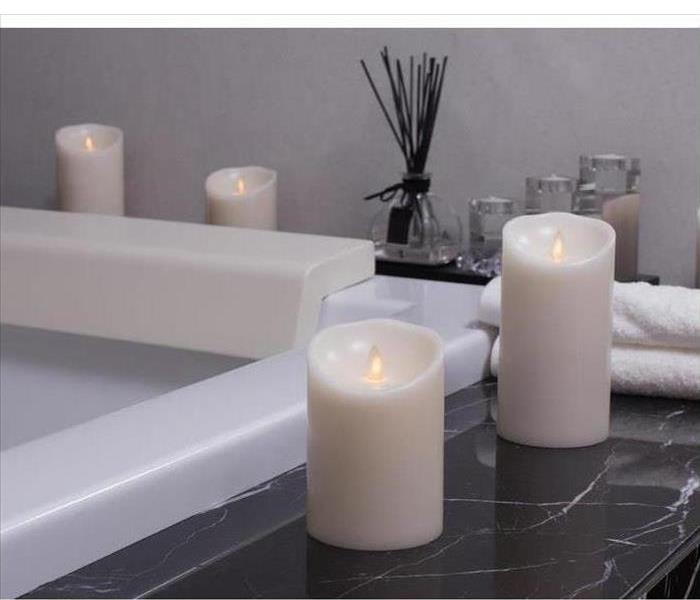 A battery-powered option takes away the risk of fire.
A battery-powered option takes away the risk of fire.
Prevent Home Candle Fires
People often light a candle at home to enjoy the warming scent it gives off, but overlook the risk of starting a fire in their home. Candles are one of the most common causes of a residential fire. Luckily, there are steps you can take to prevent one in your Magnolia, TX, home.
1. Avoid Nighttime Burning, the Biggest Candle Fire Cause
Many will light a candle to help them relax after a long day, but this can lead to a dangerous home fire if neglected. Nighttime candle burning is risky if you happen to fall asleep while the flame's still aglow, or go to bed without remembering to blow out the candle. It's best to avoid nighttime burning altogether to alleviate this risk.
2. Keep Candle Away From Anything That Might Burn
A majority of candle fires happen as a result of flammable items surrounding the candle. This can lead to quick destruction of a home and require the help of a fire damage restoration company to perform smoke cleanup and structural repairs. Be sure to keep any lit candle a safe distance away from items that could burn, such as paper documents, cloth or flammable liquids.
3. Opt for a Flameless Alternative
The foolproof way to avoid a candle fire is to use a flameless alternative. If you use candles for ambiance, a battery-powered option takes away the risk of fire. Additionally, don't rely on candles for light in an emergency power outage but stock up on flashlights instead. These alternatives can best keep your home and family safe from a potential fire.
A candle fire is more common than you think but luckily can be avoided by taking smart, preventative measures. Keep your home safe by avoiding burning at night, keeping candles away from flammable items and choosing a flameless alternative.
What Are The Common Causes of Water Damage
11/18/2022 (Permalink)
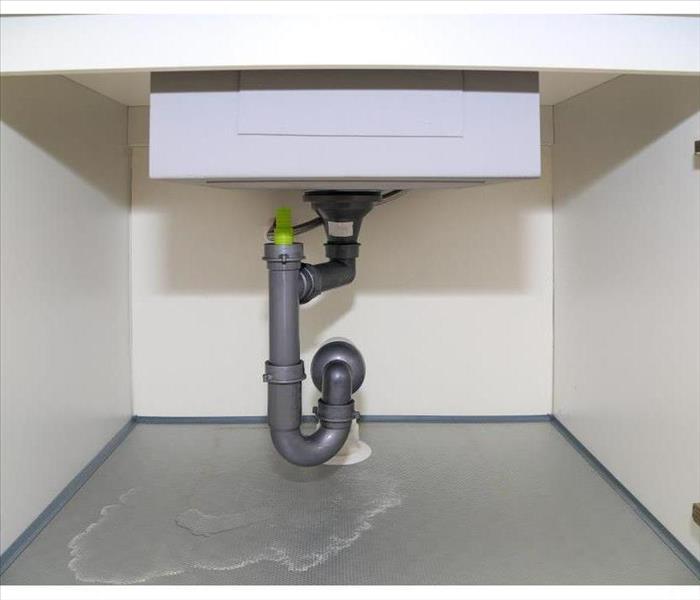 Leaks can be caused by a number of factors.
Leaks can be caused by a number of factors.
Common Causes of Water Damage
Water damage is one of the most common home emergencies. It happens when a water source, usually a sink or toilet, leaks and causes water to seep under your flooring into the crawl space below. This can happen in any room of your house and whether you live in an apartment or a house, it affects everyone. The good news is that you can avoid this from happening by taking some simple steps. By being prepared for water damage issues, you will be able to deal with them quickly if they occur
Plumbing, Sink, Toilet, and Washing Machine Leaks
Plumbing leaks are a common cause of water damage. Leaks can be caused by a number of factors, including loose pipes, worn-out washers or hoses, and corrosion. Toilet leaks often occur when the ballcock in your toilet tank breaks or gets stuck inside the tank, resulting in an overflow that results in foul odors and stains. You may also notice wet spots on your floor near the baseboards or walls; this is likely due to a leaky toilet seal that causes water to spill over into nearby areas.
Sinks can also leak when faucet washers wear out or get stuck on debris buildup within them, which allows more water than usual to escape through these openings even when they're not being used. Another common source of sink leaks comes from under-the-sink drains—if these drains become clogged with hair and dirt particles (which often happen because they're difficult to reach), then it can cause excessive water pressure buildup behind them when you turn on one of those drains' faucets such as hot/cold taps or shower-heads; this pressure buildup results in flooding due to cracks opening up within those drains' surfaces after being subjected too much stress over time without proper maintenance!
Frozen Pipes/ Pipes Bursting
If you live in an area where freezing temperatures are common, it’s important to be aware of the signs that your pipes might be about to burst. If you find yourself with a frozen pipe, there are some steps you can take before calling a plumber.
First and foremost: don't try to thaw the pipe yourself by running hot water through it! This can cause small cracks in the pipe wall that will only get worse as time goes on. Instead, use a hair dryer or heat gun at a safe distance from the affected area until it's no longer frozen (this may take hours).
If this doesn't work and you have no other choice but to call for professional help—and believe us when we say this is not something you want happening again.
Leaking Water Heater Tank
The water heater tank is the most common cause of water damage in your home. Water heater tanks can leak for a variety of reasons, such as a faulty pressure relief valve or even corrosion. If you suspect that your water heater tank could be leaking, check it out immediately and take care of any issues that arise before they worsen.
Leaking water heaters are dangerous and can cause mold growth around your home. In some cases, leaking tanks may even cause structural damage to walls or floorboards if the leak is not addressed right away.
Roof Leakage
Roof leakage is another source of water damage, and can be caused by a variety of reasons:
- a roof leak due to faulty roofing material, such as shingles or tiles
- an undetected leaky roof joint or flashing
- damage from the natural elements, such as storms and high winds, which may cause leaks in an otherwise undamaged roofing system
Call the Professionals
In the case of water damage, it is critical to address the problem immediately. The longer you wait, the more damage will occur and the more expensive it will be to fix. Water damage restoration companies have different water extraction methods and equipment that allow them to remove water from your home or business in a timely manner. These companies specialize in wet carpet cleaning, mold remediation, and other services related to water removal and repair. In addition, they can help identify any underlying problems with your plumbing system so that they do not happen again in the future.
Water damage can be very stressful and overwhelming. Making sure that you are hiring SERVPRO of Lake Conroe to handle the situation is critical. We will have your Conroe, TX home back to normal as soon as possible.
Why You Should Frequently Clean Your Dryer Vent To Prevent a Fire
11/2/2022 (Permalink)
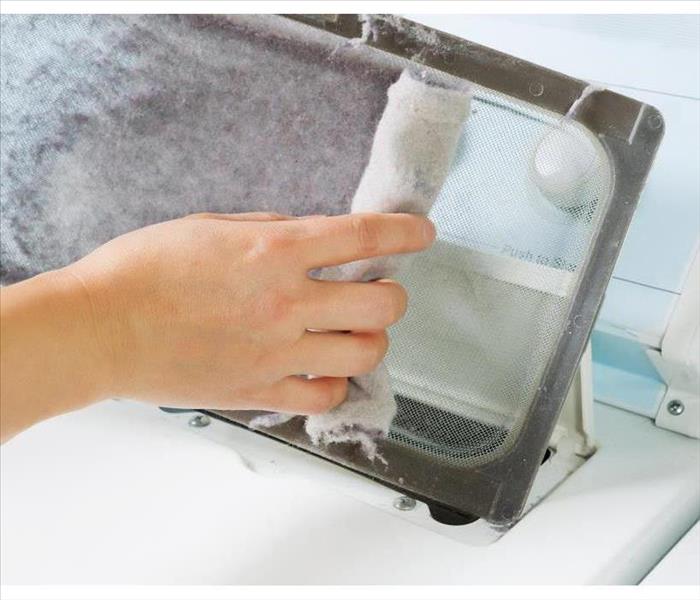 Clean your dryer's lint filter after every load of laundry.
Clean your dryer's lint filter after every load of laundry.
Why Should You Clean Your Dryer Vent Frequently To Avoid a Fire?
Every household should take preventative measures to avoid a home fire. But one leading cause that often goes overlooked is an unclean dryer vent. Material buildup and high heat from the dryer can result in a lint fire. Here's what you should do to prevent one from happening in your Splendora, TX, home.
Routinely Clean Dryer To Prevent a Lint Fire
The lint from your clothes will collect during the drying process and without proper removal, there is a risk of a dryer fire starting. Be mindful of this every time you put a load of laundry into the dryer and get into the habit of regular cleaning. This includes:
- Cleaning the dryer's lint filter after every load of laundry
- Reaching into the back of the dryer where lint can also collect
- Remove lint from the vent pipe roughly every three months
This routine cleaning can be done yourself or you can also enlist a professional, particularly if you notice your clothes are taking longer to dry.
Check Dryer Maintenance
Proper maintenance checks will keep your dryer running safely and effectively. Inspect areas around the dryer for potential fire hazards, including a damaged vent system, animal nests blocking a vent and any flammable items placed nearby.
Understand Dryer Safety Practices
A lint fire can cause severe damage to your Splendora, TX, home and often require the help of a fire damage restoration company afterward. Practice safe measures to limit your risk of a drying machine fire. These include not drying items containing plastic, rubber, foam or anything that has come in contact with a flammable liquid, not using your dryer without a lint filter and not leaving the house with the dryer running.
Be sure to perform regular cleaning and maintenance checks on your dryer along with using safe practices to prevent a fire in your home.
Fire Prevention Tips
10/16/2022 (Permalink)
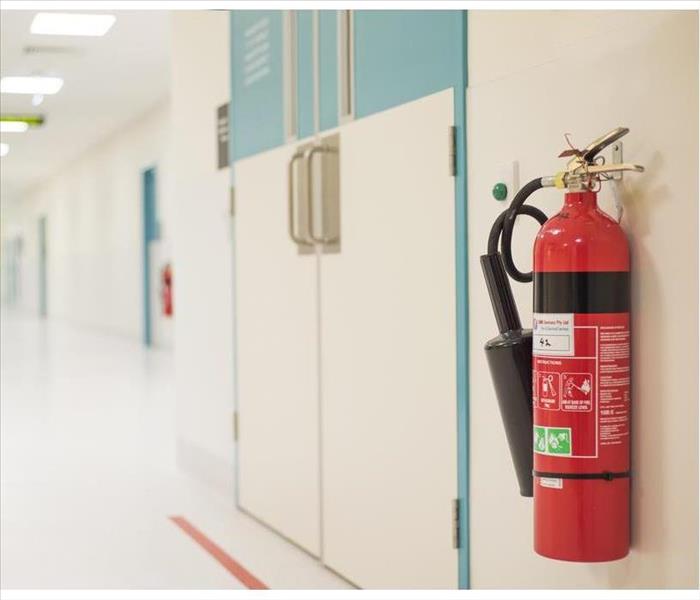 Keep the fire extinguisher handy
Keep the fire extinguisher handy
Fire Prevention Methods
Fires are often a major cause of business interruptions and building damage. While no business can be 100 percent fireproof, there are several steps you can take to prevent fires and minimize the effects should one occur. The following tips cover fire prevention methods that small businesses can adopt to make their workplaces safer.
Keep the Flammable Items Away
The best way to prevent fires is to keep flammable items away from heat sources. If a fire starts in your home, the following tips can help you extinguish it quickly:
- Never use candles in the home. A candle's waxy container can catch fire and spread the blaze. Instead of using candles, use battery-operated or electrically powered lights instead.
- Don't smoke in bed or leave cigarettes unattended while they burn out on their own. Cigarettes may start fires if they're left unattended and burn down too far before being noticed by someone nearby who can put them out quickly before they have time to spread any further than just one cigarette butt at a time! The same goes for other forms of tobacco products including cigars/cigarillos (little cigars) too... so no smoking indoors folks!
- Keep matches out of children's reach; store lighter fluid in locked cabinets, far away from appliances that could cause ignition; make sure all appliance cords are properly secured; secure electrical cords under rugs so they don't pose tripping hazards
Check Electronic Cords Regularly
Check the cords on your electronics regularly to watch out for signs of damage or fraying. Replace any damaged cords immediately. Do not use extension cords with your electronic devices, and never overload outlets with multiple devices plugged in at once.
Keep the Fire Extinguisher Handy
Check the expiration date. If your fire extinguisher is past its expiration date, replace it immediately. Check the pressure gauge. Before you use a fire extinguisher to put out a blaze, check that it still has enough pressure to do so by turning the valve on top of the nozzle and listening for escaping air (or feel for escaping air if your extinguisher does not have an audible leak). If no air comes out, do not use this extinguisher; buy a new one or borrow another from someone else. Test spray pattern and range by aiming at an area where nothing flammable can catch on fire (such as some dirt) from about 12 feet away. Do this test every six months to ensure that your extinguisher still works properly.
Consider a Sprinkler System
A well-maintained sprinkler system can help you contain a fire before it becomes a disaster. Sprinkler systems should be checked regularly, both for proper operation and to ensure that there is no damage that could lead to system failure.
Inform and Educate All Employees
Make sure that all your employees know how to prevent fires, how to use fire extinguishers, and how to evacuate in case of an emergency. Fire extinguishers are not a substitute for fire alarms; they should be used only in the event of an emergency. Ensure that all fire extinguishers are inspected annually by a certified technician and stored in a secure location where they cannot be tampered with or damaged. If a person encounters smoke while working on an electrical panel or other similar situation where there is no immediate danger from flames or sparks, do not try to put out the fire yourself! Call 911 immediately so professionals can respond quickly and safely assess the situation before risking injury.
Fire is a dangerous threat, but it doesn’t have to be. By following these tips and taking all the precautions you can, you can help keep your business safe from fire damage.
If your business does succumb to fire, give SERVPRO of Lake Conroe a call! We will help get your Houston business back up and running quickly.
5 Steps To Check Your Sprinklers To Avoid Flooding
10/2/2022 (Permalink)
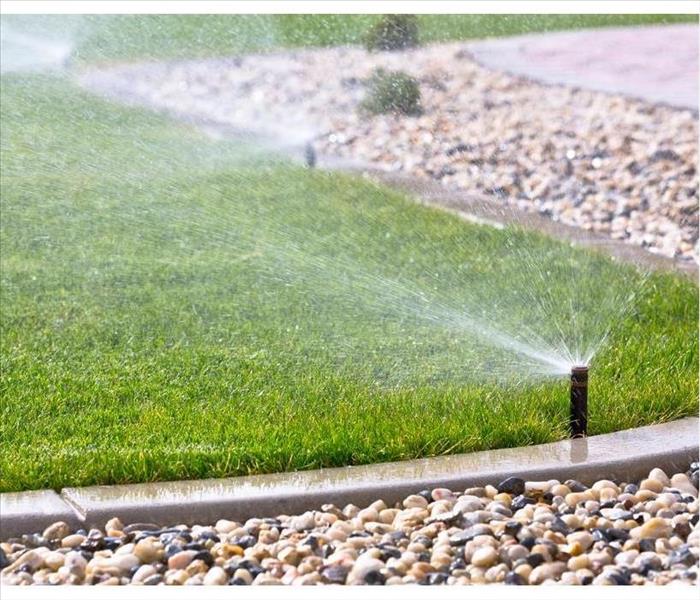 Maintain your irrigation system.
Maintain your irrigation system.
As the weather warms in Montgomery, TX, it’s essential to check your sprinkler system before watering your lawn. Regular irrigation maintenance keeps your utility costs down and prevents water damage.
How To Check Your Sprinkler System
Checking your sprinklers before turning them on prevents problems like broken sprinkler heads and pipes. Follow the steps below to inspect your system.
1. Wait until it’s warm.
Do not turn your sprinklers on until after the last frost date to prevent freezing pipes.
2. Turn on water valves.
Your water valves are probably winterized and turned at a 45-degree angle. Turn the two valves connected to your building back to their original position.
3. Remove the sprinkler heads.
Take off all sprinkler heads and check for damage. Replace if necessary.
4. Turn on the water main.
Locate your system’s water main and very slowly turn it on. The slow release of water keeps built-up pressure from bursting pipes.
5. Check for leaks and proper irrigation.
As water runs through the sprinklers, check for possible leaks and ensure the system adequately waters your lawn. If no problems are present put back the sprinkler heads.
Why Irrigation Maintenance Matters
Check your sprinkler system annually to avoid over or underwatering your lawn. Adjust for the seasons and how wet or dry your grass is. Oversaturating the ground can lead to sprinkler flooding and potential water damage. Check your pipes after the ground thaws to avoid needing restoration services.
Regular maintenance saves you time and money. By checking your sprinklers often, you may find minor issues that you can resolve before they become more expensive problems later on. An efficient system cuts down your water bill, as you only use the water you need. You can also replace parts of your sprinklers with newer, more economical technology.
Irrigation maintenance ensures your sprinkler system runs smoothly and efficiently all season long. Save yourself time and money and prevent flooding by checking your sprinklers before turning them on.
Equipment You Can Use To Remove Smoke Odor in Your Home
9/30/2022 (Permalink)
 Ozone machines are often used in the process of smoke cleaning.
Ozone machines are often used in the process of smoke cleaning.
Remove Smoke Odor in Your Home
Removing smoke in your home in Splendora, TX, after it has been damaged by a fire can be a difficult, time-consuming process, and even after scrubbing and cleaning, the smell of smoke may still be present. However, with the right equipment, smoke cleaning can be simple and effective.
1. Air Filtration Devices
There are a wide variety of air filtration devices that are often used after a home has been impacted by a fire. Air filtration devices help to make the air in the home safe to breathe and can also lessen the smell of smoke simultaneously. Many of these devices use HEPA (high-efficiency particulate air) filters in their machines because HEPA filters are able to capture small particles out of the air.
2. Ozone Machines
Ozone machines are often used in the process of smoke cleaning because the machines are incredibly effective. First, the ozone machine is placed in the area that has been affected by smoke. Large homes may require the use of more than one ozone machine. These machines change the makeup of smoke particles through oxidation. As a result, the smell of smoke can be eliminated.
3. Thermal Foggers
Thermal foggers are specialized pieces of equipment that can help to assist in removing smoke odor throughout the home. Fogging involves, as the name suggests, a fog being released into the area that has smoke damage. The fog particles can reach into small places, such as in minuscule cracks, in the same manner that smoke particles can reach into such places. The fog is then able to neutralize the odor of smoke.
Using equipment such as air filtration devices, ozone machines and thermal foggers can make the process of smoke cleaning less labor-intensive. Some homeowners whose houses have been damaged by fires find it useful to get in touch with fire and smoke damage restoration experts when they are unsure about neutralizing odors.
3 Problems Caused By Leaking Water
9/19/2022 (Permalink)
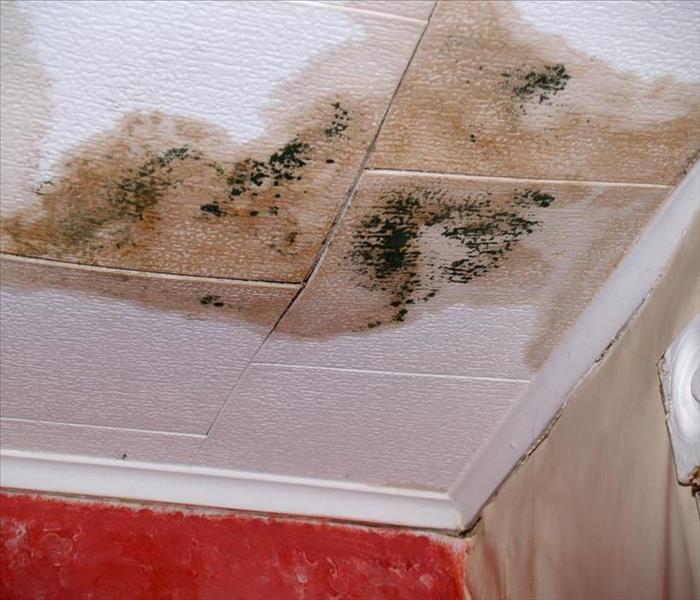 Leaking water sources must be fixed before mold remediation starts. If not, the mold will return.
Leaking water sources must be fixed before mold remediation starts. If not, the mold will return.
Issues You Might End Up If You Have a Leak In Your Building
A water leak might not seem like a big deal, but it can cause quite a few problems for your Montgomery, TX, business if it isn’t taken care of right away. Here are a few issues that you might end up dealing with if you have a leak in your building.
1. Higher Water Costs
If there is a pipe break in your building, it can cost you a lot of money over time. The worse the leak, the higher your bill. Sometimes, you can have a leak for a long time before you notice it, so it is a good idea to perform regular maintenance to prevent this from happening. If you believe that your water bill is higher than it should be, this might be the cause.
2. Structural Damage
Not only can the leak itself cost you money, but it can cause water damage that will be costly to repair. If it is not fixed quickly, the leaking water can weaken the structure of your building by causing the walls and floors to begin warping or rotting, depending on the materials used. Eventually, they will need to be replaced, which can cost your business both time and money.
3. Mold
Another common problem that can be caused by a water leak is mold growth. While this will not usually affect the structure of the building, it can still cause damage. This fungus spreads quickly in moist environments, so if you have a persistent leak, you may find mold growing inside of your walls. It can cause discoloration as well as a strong, musty odor if not removed.
Despite the problems it can cause, if you do find a water leak in your building, there is no need to panic. A water damage repair company can help you by stopping the leak and repairing any damage it has already caused. Regular inspections of your building can help prevent any long-term problems caused by water.
4 Flood Safety Tips
9/2/2022 (Permalink)
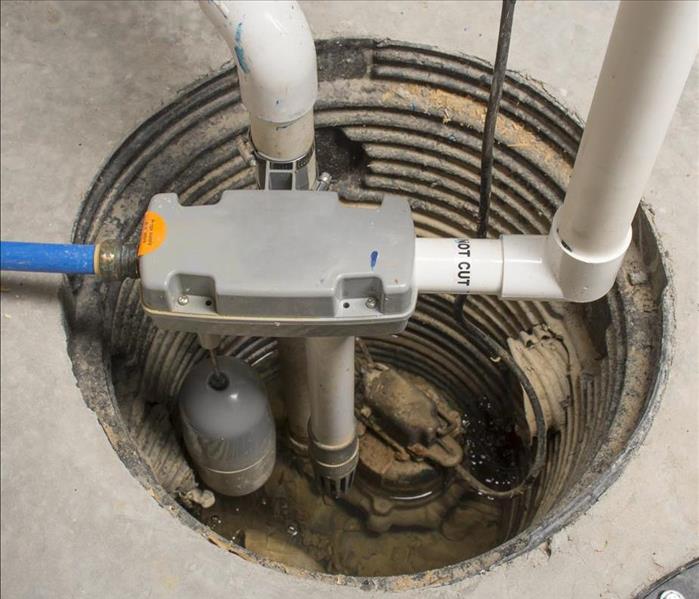 Prepare your basement.
Prepare your basement.
Flood Safety Tips
A flood is a common, yet destructive, natural disaster. When there is too much water for the ground to handle, it can rapidly accumulate, causing extensive property loss in a matter of hours. According to recent estimates, floods cost the United States almost $8 billion in damages every year.
Severe weather events are increasing in frequency worldwide, mostly due to climate change. Although the risk of flooding can’t be completely eliminated in Willis, TX, you can help keep your home and family safe by following these flood safety guidelines.
1. Rethink Your Home’s Wiring
Many electrical outlets are installed near the floor. This location isn’t ideal, especially if you own a house in a flood-prone area. To plan ahead for a water disaster, consider hiring an electrician to move your outlets above potential flood levels.
2. Reconsider Where Items Are Stored
You shouldn’t store treasured items in the basement. Even basements that are typically dry could flood if enough water accumulates. Instead, move valuable belongings to higher floors.
Flood safety experts recommend that when “soft” items like mattresses, upholstered furniture and stuffed animals get wet, they should be replaced. Keep this in mind when determining your storage arrangements.
3. Prepare Your Basement
Since flooding usually begins in the basement, give yours a fighting chance by waterproofing and installing a battery-operated sump pump. Despite your best efforts, if your basement were to flood, a water restoration specialist can help get your home back in order.
4. Teach Children About Flood Safety
Natural disasters are alarming, but being prepared can help. First and foremost, families should have a clear evacuation plan that is regularly reviewed with the kids in the household. It’s also important to have an emergency kit handy with things like flashlights, food, batteries and clean drinking water.
Floods can cause extensive damage and emotional stress. By following these flood safety tips, you can minimize the threat to your family and property.
What Is Category 1 Water Damage?
8/29/2022 (Permalink)
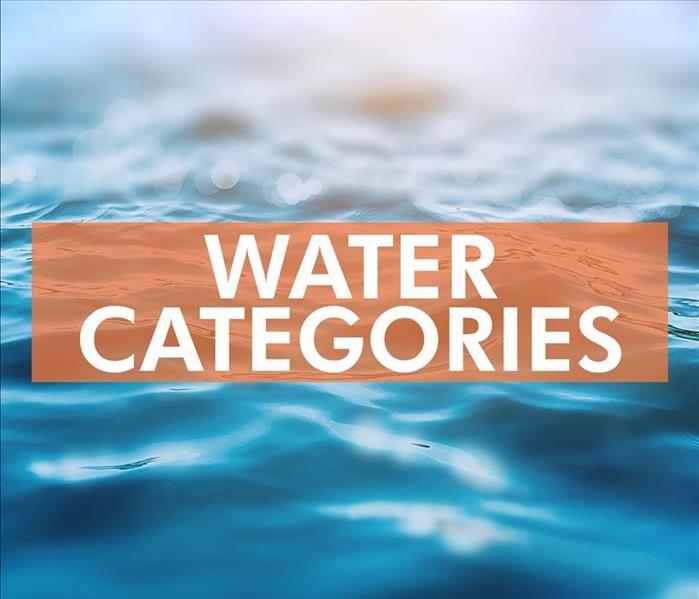 Water Categories
Water Categories
Water Categories
So you've got a burst pipe in your building in Willis, TX, and the water damage restoration experts have informed you that you have Category 1 Water Damage. It sounds awful, but what exactly does it mean?
Category 1 - Clean Water
If you're experiencing a flood, this is the least dangerous type. The water is from a clean source, such as a sink overflow, a broken pipe, or a leaky supply line.
The flood is still damaging, but the water is not contaminated. As with all floods, you'll want to arrest the spread of the water immediately to minimize the damage.
Stop the source
Pump or siphon the flood water
Dry materials and contents thoroughly
Since the water source is clean, you have fewer concerns than you would with the other categories of floodwater.
Category 2 - Gray Water
A Category 2 Flood is from a water source that contains contaminants from household use, such as detergents or biological waste. It's not clean water, but it doesn't contain sewage either. The source of gray water is usually a tub, sink, dishwasher, or washing machine that has backed up or overflowed.
Clean-up requires removing any residual chemicals or organic matter left behind after draining and drying is complete.
Category 3 - Black Water
The most serious flood occurs with black water; this is called Category 3 flood damage. The source of this floodwater is sewer backup or toilet overflow. Sewage contains toxic contaminants that need to be eradicated.
If you have a Category 3 flood, you will likely need professional help to clean the building successfully. Unlike clean water, black water can lead to black mold if not properly treated.
All flooding is damaging and needs to be handled quickly, but Category 1 is the least complicated to clean up. If the flood contains gray water or black water, you may need professional help to remove the contaminants and ensure that your building is properly sanitized and safe for use.
Purchasing the Correct Fire Extinguisher for Your Home
8/24/2022 (Permalink)
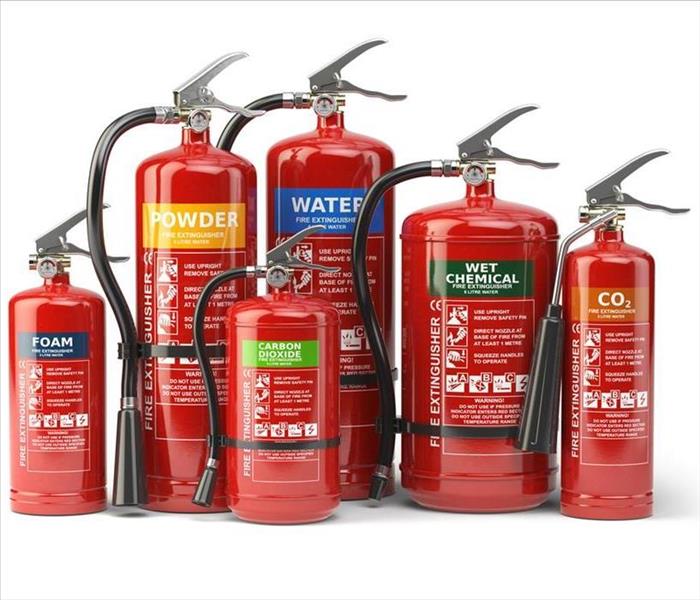 Purchase the correct fire extinguisher
Purchase the correct fire extinguisher
Types of Fire Extinguishers
When choosing the right fire extinguisher for different areas of your home/garage, consider the class. Consider the size and power of the fire extinguisher as well. Larger extinguishers may have more power, but if you physically cannot lift nor control the extinguisher, it won't do much good.
There are four classes of fire extinguishers – A, B, C and D – and each class can put out a different type of fire.
Class A fire extinguishers
Class A fire extinguishers are used for ordinary combustibles, such as paper, wood, cloth, and some types of plastic. These extinguishers typically use water or certain types of dry chemicals to either absorb heat or coat the fire.
Class B fire extinguishers
Fires that originate from flammable liquids and gas can be extinguished by a class B fire extinguisher. This is the type of extinguisher you’ll want to use on a fire caused by oil or fuel.
Class C fire extinguishers
Class C fire extinguishers are effective against electrical fires from live wires, panels, and circuit breakers. The extinguisher works by releasing materials that stop the conduction of electricity.
Class D fire extinguishers
Class D fire extinguishers are used on combustible metals. These include magnesium, sodium, aluminum, and titanium.
Class K fire extinguishers
Commonly used in restaurant kitchens, class K fire extinguishers can effectively put out fires caused by cooking fats, greases, and oils. They use a process called saponification by releasing an alkaline agent to create a foam that traps vapors and puts the fire out.
Purchasing your fire extinguisher
Now that you know how many extinguishers you need and what types to get, you can head to the hardware store. Look for fire extinguishers that you can easily lift and handle.
3 Steps To Follow When Replacing a Toilet
8/2/2022 (Permalink)
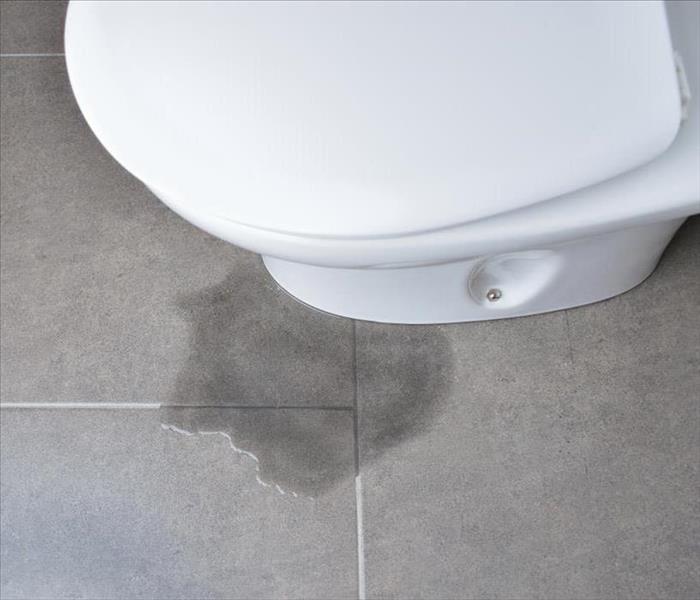 Ignoring a toilet leak can potentially lead to tremendous water damage.
Ignoring a toilet leak can potentially lead to tremendous water damage.
Steps To Follow When Replacing a Toilet
When you have a leaking toilet in your Conroe, TX, home and can't find an adequate toilet repair, you need to replace it. Ignoring a toilet leak can potentially lead to tremendous water damage, so you want to address the issue as soon as possible. Here are three steps to follow when replacing a toilet.
1. Remove the Old Toilet
The first step in replacing the leaking toilet is to remove the faulty one. Turn off the water supply line and flush the toilet a few times to empty the tank as much as possible. Unscrew the supply line from the tank and undo the bolts securing the toilet to the floor. Gently wiggle the toilet back and forth to loosen it from the wax ring and pull the toilet up. Move the toilet onto an old cardboard box and use a sponge or cup to get the remaining water out of the tank.
2. Replace the Seal
Remnants of the wax seal will likely still be on the toilet flange, so clean that off thoroughly to ensure that the next seal sits securely in place. Many water damage mitigation professionals recommend using a non-wax seal over a wax one. Wax seals wear down over time and are highly susceptible to breaking if the toilet bolts loosen and allow the toilet to move even a little bit. Rubber seals are especially helpful if you have a deeper than normal flange because the seals can easily be stacked together, while wax seals can't.
3. Install the New Toilet
Once you replace the seal, place your new toilet on the flange bolts. Carefully line the holes up on the bottom of the toilet, so the bolts slide into place. Have a friend push down on the toilet while you tighten the bolts to ensure there is adequate compression on the seal. Reattach the water hose line to the toilet tank and turn the water main back on.
While it might initially seem like a daunting task, replacing a leaking toilet is a breeze when you follow a few simple steps.
Key Things To Know About Category 3 Water Damage and Its Cleanup
7/24/2022 (Permalink)
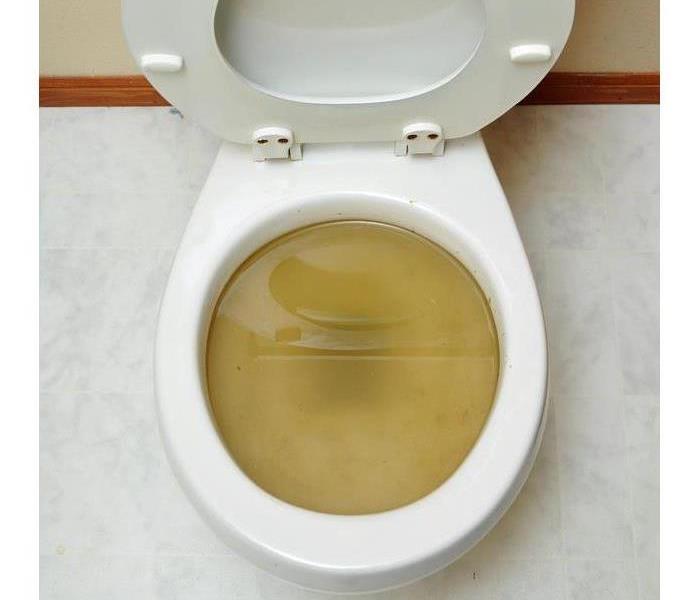 Even a small toilet overflow with waste can be as hazardous as high flood water.
Even a small toilet overflow with waste can be as hazardous as high flood water.
Category 3 Water Damage
There are three distinct categories of water damage that are determined by contamination level: clean water (Category 1), grey water (Category 2) and black water (Category 3). All three can be detrimental to a space if left untreated, though Category 3 poses the biggest threat and requires swift action to clean up. Here are some key things to know if black water impacts your Willis, TX, business.
Black Water Is Highly Contaminated and Harmful
Category 3 damage boasts the name black water given its substantial contamination levels. Dangerous bacteria, viruses and toxins are present in the water. Common causes of Category 3 water damage include:
- Broken sewer lines
- Rising seawater
- Groundwater flooding
It is also likely that grey water that is left untreated for more than 24 hours can become more contaminated and evolve into black water.
Flood Water Is Among the Most Serious Cases
Black water damage occurs in any natural flood, whether it is from heavy rainfall or a storm that elevated sea and river levels. Due to the several inches (and in severe instances, feet) that flood water can pile up, building damage can be extensive. The toxins carried in this water can seep into the structure and become a major repair project.
The Cleaning Process Is Critical
Given the risks that black water presents, always call on a water damage restoration company to tackle the mess. These professionals specialize in extracting the water, drying the space and deep cleaning every area impacted by black water. Sanitizing is crucial for any size space, as even a small toilet overflow with waste can be as hazardous as high flood water.
Category 3 water damage is extremely concerning no matter how it presents itself. If your property is impacted, be sure to properly clean the space with the help of trusted professionals for the highest level of safety.
4 Tips for Staying Safe During a Flood
7/12/2022 (Permalink)
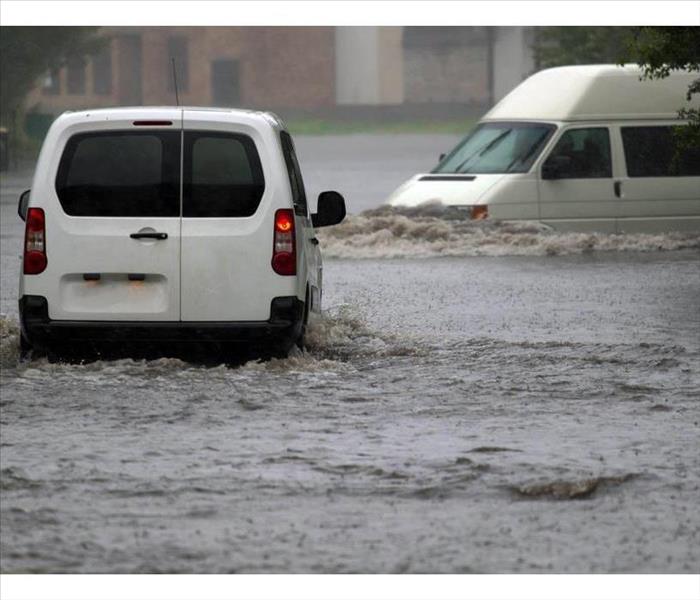 Do not travel through flood waters.
Do not travel through flood waters.
Stay Safe During a Flood
If you live in an area that often experiences severe weather and flooding, you should make flood safety a priority in your Conroe, TX home. Use the following tips to help keep you, your family and your home safe during a flood.
1. Make an Emergency Kit
Depending on the severity of the storm you are expecting, your emergency kit may vary from time to time. However, there are some items that should always be included, such as flashlights, radios and batteries in case the power goes out. Canned food and bottled water are good additions as well.
2. Have an Evacuation Plan
While an emergency kit can be helpful for less damaging storms, you need to know how to leave your home safely if the weather becomes a threat. Create a flood safety plan with your family that includes each member as well as any pets. Make sure to practice ahead of time so you are all familiar with the procedure.
3. Do Not Travel Through Flood Waters
If you do need to evacuate your home, only travel on roads that have not been flooded. Even if the waters look shallow, there may be road damage or debris lurking underneath. Depending on the speed and depth of the moving water, cars can be carried away resulting in a dangerous situation.
4. Have Your Home Cleaned As Soon As Possible
The need for flood safety does not end when the flood does. Flood waters can cause contamination and might make your family sick if it is not completely removed. If water from a flood has entered your home, it is a good idea to hire an emergency remediation service to help with cleanup as well as any necessary repairs. Throw away any food that has been in contact with the water.
It can be difficult to know what to do during an emergency situation. Keeping these safety tips in mind will be beneficial to you and your family the next time you find yourself expecting severe weather.
The Role of FEMA After a Storm
7/2/2022 (Permalink)
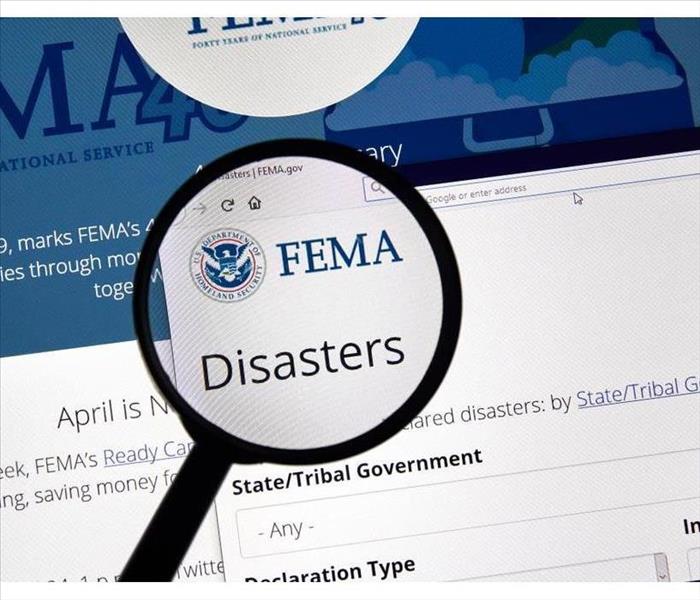 FEMA is here to help families recover from disasters.
FEMA is here to help families recover from disasters.
FEMA's Role After a Storm
Powerful storms happen frequently in the U.S., from hurricanes that impact coastal areas to tornadoes that often hit the nation's Midwest to floods that damage homes along with major river systems. In nearly all of these situations, FEMA, the Federal Emergency Management Agency, is there to help families recover from disasters. The area has to be declared a federal emergency zone for the agency to provide assistance, where its role after a storm is to help citizens and emergency personnel respond to multiple challenges:
- Increase safety for all people
- Support the resources that lead to rescues
- Identify funds for recovery programs
The agency takes on a coordinating role, helping to manage the various parts of recovery. This includes a community of workers, lenders and businesses that make recovery possible.
An Effective Flood Response
When waters come into a home, the situation calls for an experienced water damage mitigation company located near the disaster in Cleveland, TX. This allows for a rapid response from highly-trained workers. The right company meets the criteria of FEMA for enacting a safe recovery by following established protocols. This includes water removal from the home, drying out of impacted materials and the restoration of damaged structures in the home. This response helps the individual family and the community recover from an overwhelming weather event.
A Comprehensive Approach to Flooding
Big disasters require the coming together of many different entities. The goal is to save lives, preserve property and help fund recovery, especially in situations where homeowners are uninsured or underinsured. Without this federal assistance, many families would face an uncertain future and might not have the resources to rebuild after a storm.
FEMA plays an important and often challenging role in keeping communities strong after a large disaster. By working with other parties, the agency looks to direct resources in the most effective manner possible.
Easy Ways To Troubleshoot Your Irrigation System
6/20/2022 (Permalink)
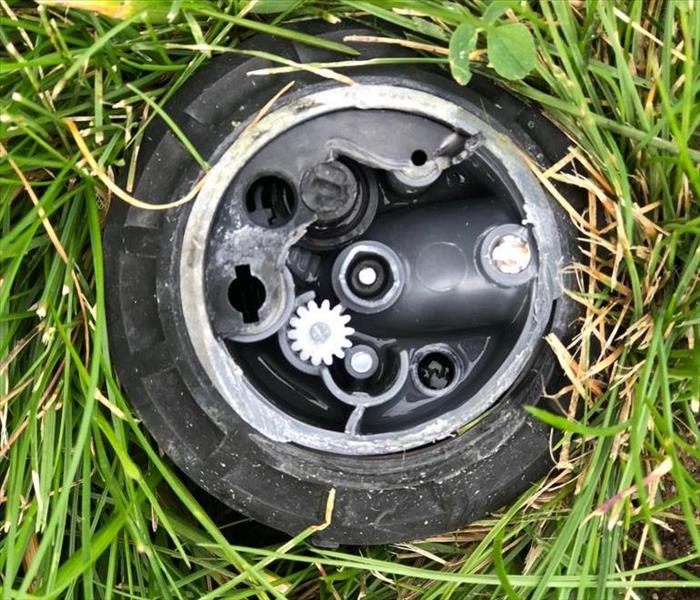 Broken sprinkler heads cause water to gush out or spray inconsistently.
Broken sprinkler heads cause water to gush out or spray inconsistently.
Troubleshoot Your Irrigation System
If your commercial irrigation system malfunctions, it will fail to water your property’s lawn evenly, and your grass may become waterlogged. Standing water can potentially lead to flooding. The key to fixing your system’s problem is finding the source of the issue. If you have a sprinkler system in Magnolia, TX, follow the troubleshooting tips below to prevent a simple error from damaging your building.
External Issues
Sometimes, irrigation problems stem from sources outside of the existing system. Tree roots can grow into the sprinkler pipes, causing blockages or cracks. If the water cannot flow freely through the pipes, you may have problems with water pressure. A broken line can also lead to flooding.
Excessive foot traffic across the property could also be the source of your irrigation issues. Pressure from bikes, strollers or large groups of people compacts the soil, adding to the weight on top of the system’s pipes. If you have flooding from a cracked or broken line, work with a restoration and clean-up team to take care of the damage.
Irrigation System Problems
The problems could also come from a malfunction within the system. When one part stops working correctly, the sprinklers may not run properly. Some common issues include:
- Broken sprinkler heads cause water to gush out or spray inconsistently.
- Corroded or broken electrical wires cause the system’s timer to give out.
- Cracked or broken pipes cause water to seep out of the sprinklers and create standing pools of water or dry patches where the water can’t reach.
- A broken solenoid or valve will often lead to unusually high or low water pressure and seeping water.
Troubleshooting your irrigation system when it first presents a problem will prevent any malfunction from damaging the landscaping and the building. Save yourself time and money by resolving your sprinkler issues from the get-go.
The Important Role of the IICRC in the Restoration Industry
6/13/2022 (Permalink)
 Our technicians are certified by the IICRC
Our technicians are certified by the IICRC
The IICRC's Importance in the Restoration Industry
If your company in Splendora, TX, must deal with a disaster such as a flood or a commercial fire, it can be reassuring to know that many dedicated professionals exist to help you out. One of these vital players is the Institute of Inspection Cleaning and Restoration Certification or the IICRC. This agency serves as a vital third party for the restoration industry, involved in establishing important cleaning standards as well as providing certifications for workers. The agency works closely with SERVPRO franchises throughout the U.S. and Canada as it enhances restoration protocols and safety standards across the entire industry.
The Value of a Mitigation Certificate
Without universal standards, any company could claim expertise in technical matters associated with disaster cleanups. This would make it difficult for your company to select the best restoration service in your area. The IICRC provides certifications that are respected and carry weight. A technician with a professional certification must pass rigorous training standards and show knowledge in relevant areas:
- Microbial remediation
- Moisture inspection
- Carpet cleaning
- Floorcare
- Water damage restoration
- Upholstery and fabric cleaning
When your company needs a cleanup after a disaster, you want trained technicians to take charge of the operation. This will reduce damages and speed up the time frame to complete the work.
The Benefit of Quality Work
Each disaster is unique and requires skilled workers and sophisticated equipment. Work that is not done correctly can lead to additional problems such as lingering odors, damaged structures and mold growth. A cleanup or restoration that follows IICRC standards is more likely to result in your satisfaction. The job will be done correctly the first time, returning your facility to its original condition.
Professional certifications are one of the best ways to ensure the company you choose is reputable. These technicians will be the best in the cleaning and restoration field.
Storm Services: How Can They Assist Insurance Agents During Times of Disaster?
6/4/2022 (Permalink)
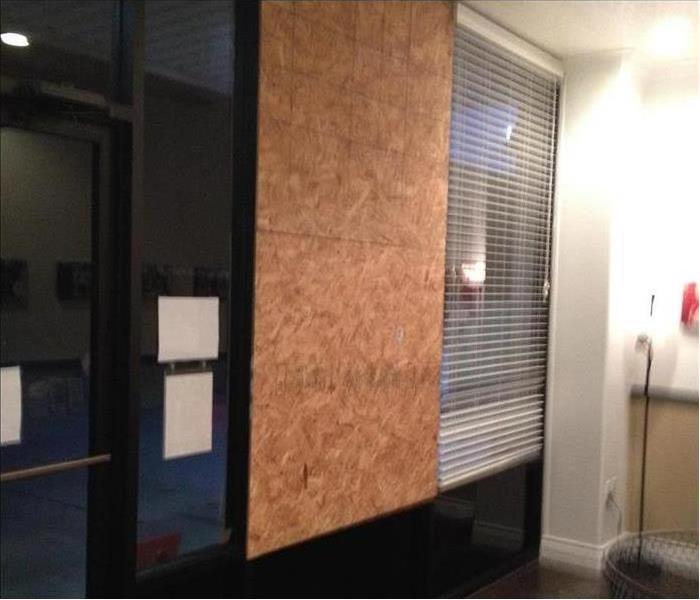 Emergency tarp and board-up services in a Conroe, TX facility.
Emergency tarp and board-up services in a Conroe, TX facility.
Storm Services
When powerful storms strike Conroe, TX, they can affect a variety of businesses and create an influx of work for insurance agents and claims adjusters. These professionals must inspect each property, help the owner file a claim and ensure it is processed properly. Having a storm restoration company on hand can give these agents the support they need, especially in a large city or after a serious natural disaster.
Assessment of Damages
Storms that contain heavy rains and high winds can cause an array of damages to businesses. Properties may require significant repair and might include the following:
- Broken windows
- Damaged roofing material
- Flooded drywall and carpeting
When storm response teams work in tandem with insurance agents and adjusters, they can streamline the assessment process by reporting which damages will need to be repaired right away. They also help determine the type of restoration service that is needed and the cost associated with it.
Faster Claims Processing
When multiple businesses in the same area suffer damage due to flooding or high winds, insurance agents may have a difficult time processing claims at a rate that helps owners recover quickly. This can be especially true in the case of flood damage, where the claims process can be extensive. Agents that work with a restoration service may be able to offer a faster turnaround. Professional flood technicians can create one comprehensive damage report for each company to make filing claims simpler.
Less Confusion
Insurance agents that collaborate with a storm restoration service may be able to work with multiple customers in the same area with more efficiency, even when the damage to each property is similar. Detailed reports and repair estimates may help agents avoid confusion in the aftermath of major flooding.
The storm restoration process can be daunting for business owners in Conroe, TX. However, when their insurance agents are supported by knowledgeable storm repair experts, the claims process may not be as difficult for them.
Grill Cleaning Keeps Your Backyard Meals Tasting Great
5/27/2022 (Permalink)
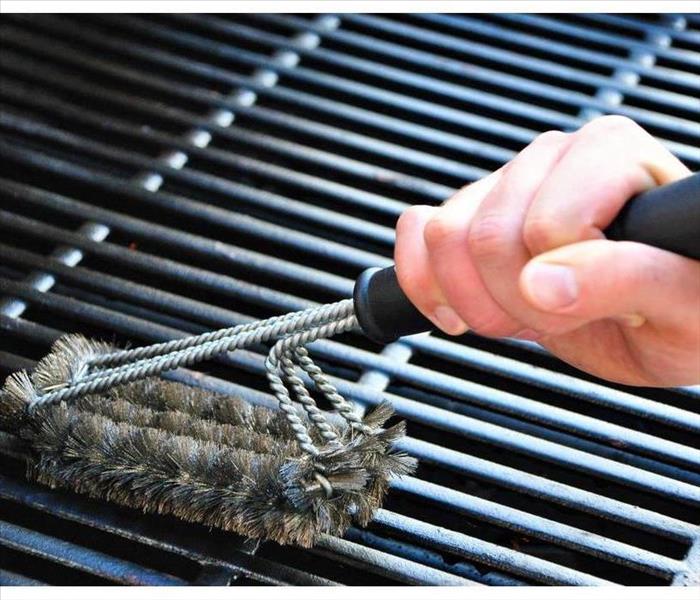 Grill cleaning is a relatively easy task that pays off with better-tasting food.
Grill cleaning is a relatively easy task that pays off with better-tasting food.
Grill Cleaning
An outdoor grill is a convenient and delicious way to prepare meals in Willis, TX. To get the best flavor, you'll need to clean your grill from time to time. Grill cleaning also keeps it performing at its best and reduces the risk of a grease fire. You can clean your grill in a few easy steps.
Gather Supplies
Before you begin, you'll need to get your supplies together:
- Grill brush
- Paper towels
- Dish soap
- Aluminum foil
- Bucket
- Work gloves
- Garden hose
Start with a warm grill and make sure all knobs are in the off position. Disconnect the propane tank.
Begin Cleaning
Remove the grill grates and metal plates and soak them in a bucket of hot, soapy water. While they soak, cover the heating elements with foil. Use the grill brush to remove carbon buildup on the underside of the hood and grill walls. Use a damp paper towel to wipe the surfaces clean.
Continue your grill cleaning by emptying the drip pan over a trash can. When it's empty, soak the pan in the bucket. Remove the metal plates and grill grates. Scrub them clean with the grill brush and spray them with the hose.
Remove the foil and clean the heating elements with the grill brush, then remove the drip pan from the bucket and rinse it. Replace all items and reconnect the propane tank.
Enjoy Your Clean Grill
Grill maintenance helps you avoid the risk of a fire that could lead to damage and the need for emergency restoration services. To use your grill safely, always stay near it while you're cooking and keep children and pets away. Your grill should be kept away from the house, out in the open, where there are no overhead obstructions like low branches.
Grill cleaning is a relatively easy task that pays off with better-tasting food. It also gives you peace of mind as you prevent the risk of fire.
Things to Avoid After a Flood
5/17/2022 (Permalink)
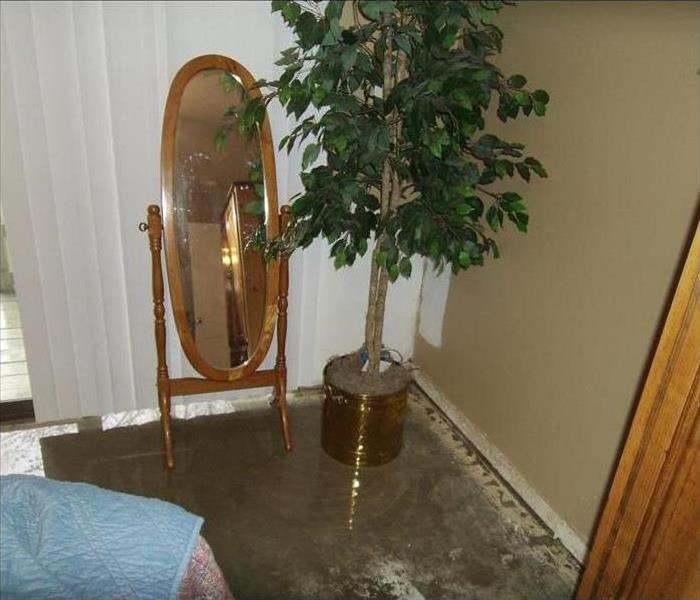 Storm damage in Conroe, TX.
Storm damage in Conroe, TX.
The Aftermaths Of a Storm
If your home is flooded due to a storm in Conroe, TX, it needs to be taken care of as soon as possible to avoid further damage and mold growth. You should call a flood restoration team right away to deal with the floodwater. In the meantime, there are some things you should be aware of to keep yourself and your family safe.
Avoid Standing Water
Floods can occur when there are big storms with heavy rains and strong winds. These storms can cause power lines to fall, which can result in an electrical charge underground. Standing water may be electrically charged, so you should avoid areas that have standing water.
If you absolutely have to walk through standing water, always wear protective clothing, such as:
- Knee-high rubber boots
- Rubber gloves
- Protective overalls
Wearing these will help protect you against an electrical charge. You should also avoid touching any floodwater, as it can be contaminated with bacteria, chemicals and other pollutants.
Avoid Turning on electricity
Another way to avoid electrical accidents is to keep the electricity off if the storm caused the power to go out. Only turn it back on once the flood specialists tell you it is safe to do so.
Avoid Waiting too Long to Deal with a Flooded Home
You should start dealing with the flood water immediately to prevent further water damage. Mold can begin to grow in moist areas within 24 hours, so removing standing water and drying things out completely is imperative. The restoration team has pumps to quickly remove any standing water, and they also have powerful fans and dehumidifiers to dry things out fast.
Dealing with the aftermaths of a storm is not fun. Dealing with floods takes quick and thorough work to maintain the structure of your home and preserve as many personal items as possible.
4 Reasons You Should Avoid Driving Through Flooded Streets
5/4/2022 (Permalink)
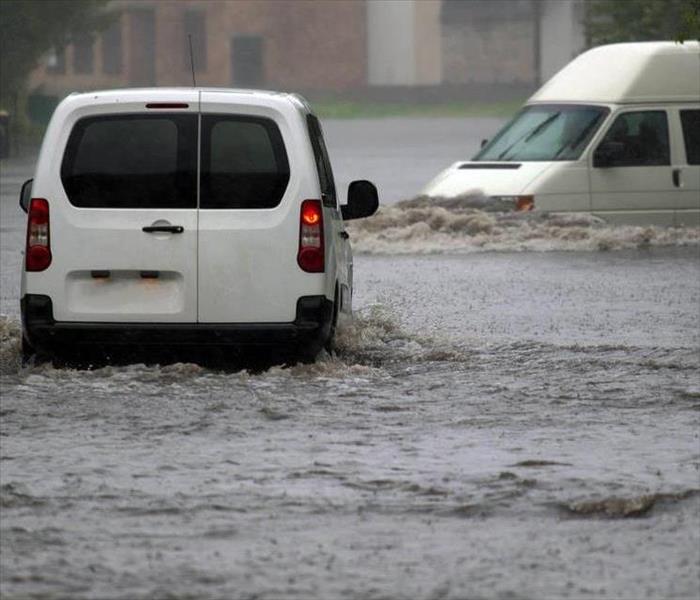 Avoid driving through a flooded street.
Avoid driving through a flooded street.
Avoid Flooded Streets
Traveling through a torrential rainstorm can be a harrowing experience for any driver. Although arriving at your destination as quickly as possible may be a priority, making wise driving decisions during extreme weather is important. Key travel tips, such as avoiding a flooded street, can keep you and your passengers safe. Because of potential dangers, ignoring this important advice can have devastating consequences.
1. Threat of Drowning
It’s easy to underestimate the depth of water flowing over a roadway, especially at night. Floodwaters can also wash away the road surface, leaving nothing for your tires to grip. Both scenarios create the potential for water to overtake your vehicle. Losing control of your automobile creates a dangerous situation and increases the risk of drowning.
In addition to an accurate depth, you may also fail to recognize water speed. A fast-flowing current can carry your car away from the roadway and make it difficult to swim to safety. You may also be injured by floating debris.
2. Electrocution Hazard
Traversing a flooded street may also be hazardous due to potential storm damage. High winds can, for example, cause downed powerlines. This scenario increases the risk of electrocution.
3. Perilous for First Responders
Fast-moving currents, exposed wires and debris also create a dangerous situation for first responders dispatched to the scene. Turning around and seeking an alternative route can keep yourself and rescuers out of harms way.
4. Destroyed Engine
Flooded roads can also be detrimental to your vehicle’s integrity. Water intake can stall and destroy your engine, resulting in potentially costly repairs that could have easily been avoided.
A significant rainstorm can cause significant storm and flood damage in Cleveland, TX. Driving through the deluge can be a dangerous challenge. Although it may delay you from reaching your desired destination on time, evading a flooded street can safeguard multiple lives. For this reason, Turn Around Don’t Drown should be the travel tip you never ignore.
Business Owners Should Be Aware of Secondary Damage Concerns
4/22/2022 (Permalink)
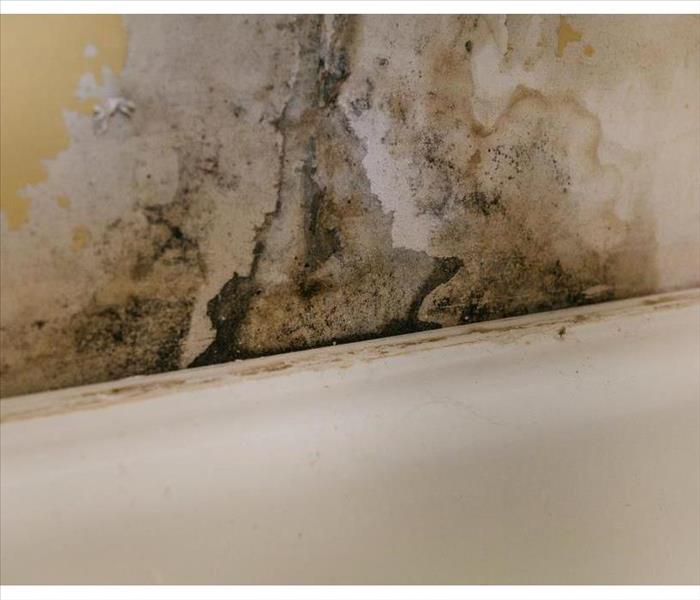 Water damage can lead to mold growth.
Water damage can lead to mold growth.
Secondary Damage Concerns Should Be Considered by Business Owners
A pipe burst inside the building, spraying water everywhere. The pipe is the primary damage, and it alone is a headache to get fixed; however, the Excess moisture significantly impacts a structure, leading to multiple secondary issues such as black mold and rot. If an establishment in Cleveland, TX, has flood damage, proprietors must act swiftly to reduce secondary conditions. Here are three things owners should understand about the depth of the issue.
1. This Isn't a Surface Level Problem
In an attempt to clean up, owners tend to grab rags and soapy water; however, this act doesn't contain the problem. Towels aren't enough to dry it out. Cleaners aren't going to eradicate all of the bacteria. People don't have the time to let it air dry. As the room develops high humidity levels, porous materials create more dampness. The water penetrates deep within the structure and enters the air vents. Rely on industrial dehumidifiers and air movers to control the airflow and room temperature.
2. Fungus Is a Real Possibility
Black mold thrives in damp, dark locations. The flood created the perfect environment to trigger a possible infestation. Spores multiply within one to two days, so owners do not have time to waste if they want to avoid contamination.
3. Reduce Water Levels
Secondary damage is anything that happens as a result of something else. To ensure that the area is restored to proper operating conditions, work with a water restoration company to evaluate the amount of destruction and establish a remediation plan. Specialists concentrate not only on drying but removing soaked fixtures and materials. This act ensures that space has reduced spore levels and dries easier.
Black mold could grow because of a primary plumbing event. Treat water intrusions seriously, airing out space and eliminating pieces that cannot be cleaned. Proactive approaches minimize secondary issues, speeding up repairs and keeping the bills lower.
3 Ways To Prevent Mold From Invading Your Business
4/14/2022 (Permalink)
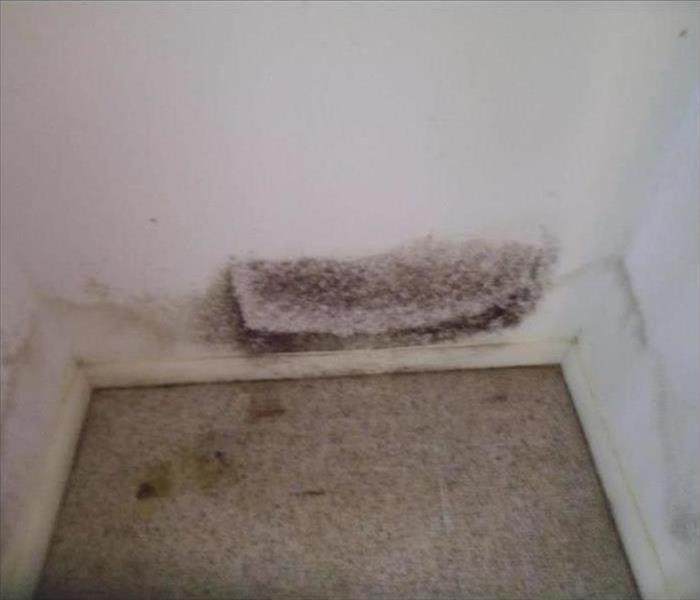 Water leaks can lead to mold damage.
Water leaks can lead to mold damage.
Tips To Prevent Mold In Your Home or Business
Mold can grow anywhere and spread easily. It is a common result of water damage when water is left unseen in unattended places. Mold is persistent and challenging to clean, so here are a few tips to help prevent mold in your home or business in Magnolia, TX.
1. Identify and Correct Problem Areas
Mold thrives in warm, moist air. If there are areas of your home that are frequently filled with moisture or humidity, such as a laundry room or bathroom, find a way to ventilate the area regularly by installing fans or windows. Fix dripping or leaking pipes quickly. Get rid of carpets that seem to be persistently damp. Mold is tricky to clean. Address the problem areas in your home to stop the problem before it starts.
2. Dry Wet Areas Quickly and Thoroughly
Broken appliances, leaking pipes, and flooded basements can all lead to mold if not dried quickly. The errant water soaks into carpets and flooring and festers where you cannot see it causing water damage and mold. Mold is not always immediately visible. You may smell it before you realize you have a problem. Cleaning and drying leaks and floods as soon as they happen is an essential step in mold prevention.
3. Use Mold Resistant Building Products
When building, fixing, or renovating any structure, there are products available that can help to prevent mold growth. Look for mold-resistant drywall and moisture-resistant drywall. The latter can be especially useful in bathrooms or laundry rooms that are known for frequent moisture build-up. There are even some paints available with mold inhibitors.
Mold infestations require thorough cleaning. Infected possessions may need to be discarded, and walls and flooring often need to be torn out and replaced.
When not cleaned properly, mold often reappears. Mold restoration specialists can assist in mitigating the problem after any unexpected water damage.
What To Do if the Neighboring Building Experiences a Fire
4/8/2022 (Permalink)
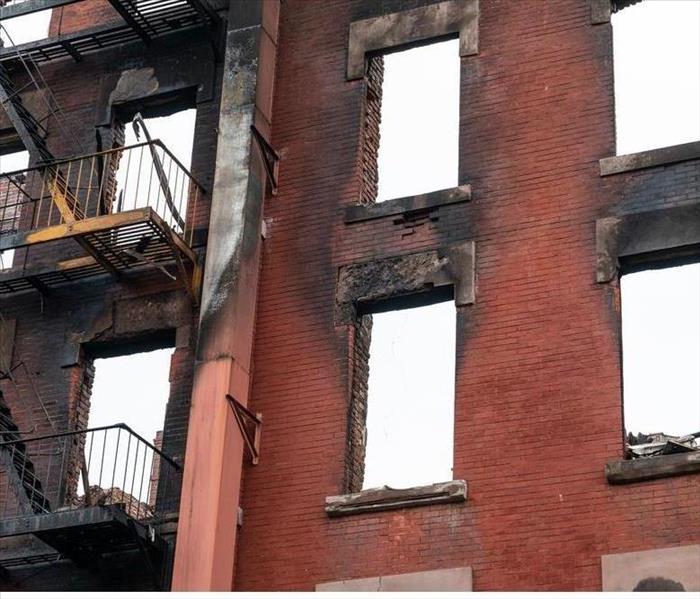 Fire damage in an apartment building in Magnolia, TX.
Fire damage in an apartment building in Magnolia, TX.
What to Do If a Fire Breaks Out at a Neighboring Building
It can be scary to experience a fire in your own building, but should you be worried if the neighboring building is on fire? It may depend on how close it is to you, but usually yes. In Magnolia, TX, it's better to be safe than sorry.
Evacuate
Even if the fire itself is in no danger of spreading to your commercial property, there are other damaging effects that can make their way over. Smoke and soot damage, heat and the effects of the fire suppression materials can all affect your space. You should consider evacuating the property to ensure the safety of your staff and equipment. It would be a good idea to focus on the following:
- people
- valuable electronics
- important documents
- delicate materials
Evaluate
Once the fire is over, if possible, you should check in with your neighbor. Then you can assess the damage to your own property. Can you see any discernible smoke damage? If not, it may still be there, but you may need to hire a professional to inspect for it. There may also be water damage if the fire hose got sprayed in your direction. If water is left to sit, it may eventually become a mold problem. Be sure to document everything you can.
Enquire
Once you've done a walk-through, a call to your insurance company is in order. Your policy will probably cover repairs if it already includes fire protection. To confirm your claim, an insurance adjuster may come out to assess the damage for themselves. They may also have recommendations for a qualified remediation company that specializes in smoke cleaning.
Unfortunately, the misfortune of others can also become your misfortune. Among other things, smoke damage can effect structures nearby that were never part of the original fire. If you ever find yourself in a situation like this, don't hesitate to take the proper steps to address it right away.
How To Care for Water-Damaged Wood Flooring
3/27/2022 (Permalink)
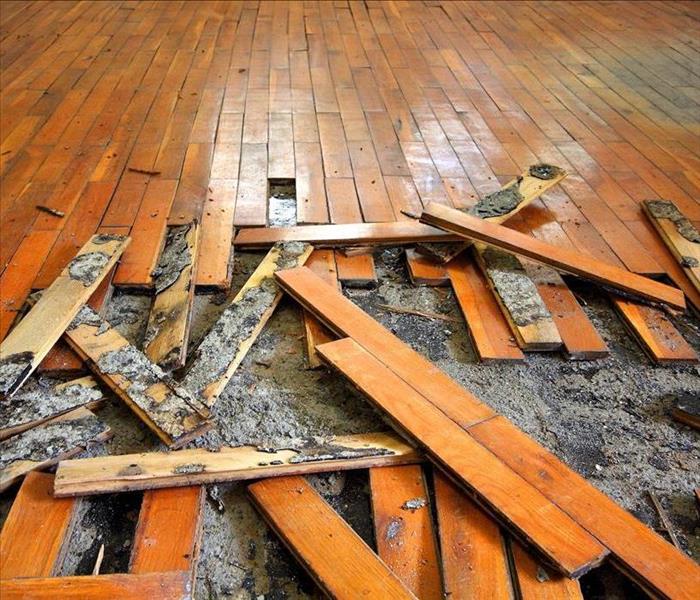 Wood floor damaged in a commercial building.
Wood floor damaged in a commercial building.
Water Damaged Wood Flooring
Wood floors in a commercial building can sustain significant damage after a pipe burst or other exposure to large amounts of water. It is necessary to respond to water damage quickly to salvage flooring in a structure located in Montgomery, TX.
Extract Standing Water
Wood is a porous material. While commercial wood floors may be varnished to reduce permeability, it is still necessary to remove water quickly. Any of the following methods may be effective, depending on the quantity of water:
- Mop and bucket
- Pump
- Wet-dry vacuum
Removing water from a wood floor as soon as possible can limit the degree of damage. Wood may start to become discolored or warped within a matter of hours and may not be salvageable after days of saturation.
Dry the Floor
After removing water, direct drying methods such as applying towels to the surface and indirect methods such as air movers, fans or dehumidifiers can promote drying. If a pipe burst causes damage and water is removed within hours, no disinfection is necessary. Exposure to contaminated water calls for cleaning and disinfection and may necessitate tearing out and replacing wood flooring.
Restore Damaged Wood
There are several ways to recover wood that has sustained damage from water. Resurfacing wood by sanding can eliminate cupping, which involves floorboards that have become concave or convex due to exposure to moisture. It may be necessary to sand off paint or finish if mold forms underneath this layer of a wet floor prior to treating, drying and refinishing.
Removing standing water from wood floors as soon as possible is essential for limiting damage. Over time, wood may become discolored or warped. In cases where water remains present for an extended period of time, such as a pipe burst that is not immediately detected at a building in Montgomery, TX, it may be necessary to replace wood floors.
5 Pieces of Essential Equipment for Cleaning Mold
3/22/2022 (Permalink)
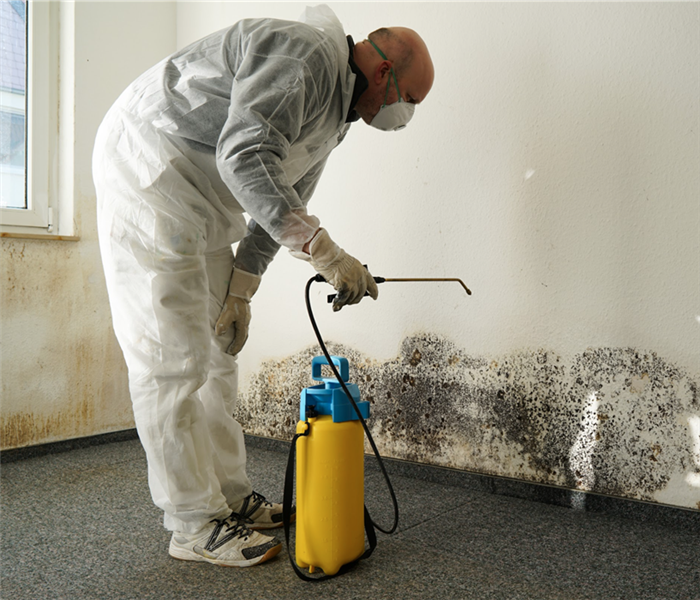 Always wear protective gear while removing mold.
Always wear protective gear while removing mold.
Mold Cleaning Equipment: 5 Must-Have Items
In the unfortunate event that your office in Willis, TX, becomes infested with mold, quick removal is essential. If you elect to tackle the cleaning task without professional help, use proper equipment to protect yourself from mold’s harmful effects. Here are five items that should always be used in conjunction with fungal scrubbing.
1. Respirator
Perhaps the most critical of accessories is the respirator. Because it prevents workers from breathing in mold particles, wearing a mask is absolutely required. There are many types of filtering masks commercially available, from inexpensive disposables to highly expensive beauties. You should have no trouble finding an appropriate selection that matches your budget and taste.
2. Gloves
Like masks, there are a wide variety of gloves available. Whether you choose ones made out of latex, vinyl, or nitrile, always protect your hands with the proper fit. No matter what style of glove you settle on, avoid touching your face when dealing with mold.
3. Hazard Suits
Protective clothing suits need to be worn when in proximity to any mold growth. Tyvek makes a one-piece that can be conveniently slipped over regular clothes. Hazard suits can be difficult to find, which is one reason allowing mold removal professionals to handle the task for you is a sensible alternative.
4. Goggles
Naturally, safety goggles prevent mold spores from floating into your eyes, but they also stop chemicals used for cleaning from splashing into them as well. Disturbing spores inevitably cause them to waft into the air, making goggles an absolute necessity.
5. Hair and Shoe Coverings
Your head and feet are susceptible to collecting fungal matter. Avoid spreading spores throughout the office by using disposable protectors. Be certain to don fresh ones before every mold cleanup session.
Mold removal is a potentially dangerous activity. Unless you use a team of qualified experts to clean the compromised area on your behalf, protect yourself and the rest of your team by acquiring the correct gear.
3 Steps to Take in Case of a Leak in a Multifamily Home
3/22/2022 (Permalink)
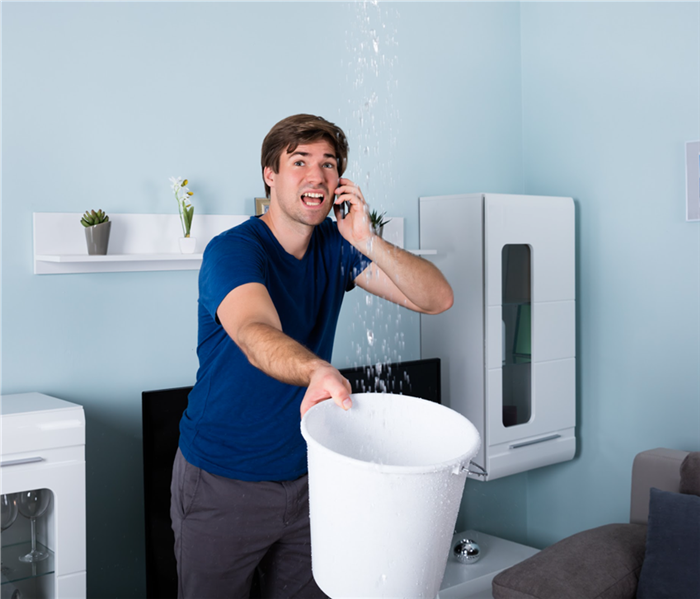 Ceiling is leaking due to the bathtub on the second floor of the home.
Ceiling is leaking due to the bathtub on the second floor of the home.
When a leak occurs in a multifamily home, the business owner is not the only person who suffers. Multifamily homes can accommodate two or more families in a collection of apartments. Damage from water in home apartments can cause residents to experience days of inconvenient repairs, especially in severe cases. Business owners in Splendora, TX, can be prepared by:
- Having a list of contacts in case of an emergency
- Creating a plan for repairs
- Having tools on hand for water cleanup
Steps To Take In Case Of a Leak In a Multifamily Home
1. Find the Leak
Look for the source before taking action so that you can create a plan of action. If the leak is not severe, you may be able to fix it yourself. In extreme cases, such as a burst pipe or toxic water, residents may need to relocate while an apartment is being fixed. Communicate effectively with them to avoid frustrated residents. Pipe cleanup and property restoration should take place before they are able to move back into the apartment.
2. Contact Your Insurance Company
Insurance companies can save you money by covering cleanup and restoration. Most companies cover broken pipe and water in-home repairs. Contact your insurance company immediately to make a claim and out of pocket costs.
3. Contact a Professional Cleanup and Restoration Service
After contracting a plumber to fix the leak, a company that specializes in water damage restoration can quickly clean and restore your property so that residents can return to normalcy. SERVPRO is a company that specializes in restoring and dehumidifying water-damaged materials to prevent microbial growth in the future. Hire professionals that make it seem “Like it Never Even Happened”.
Having a plan for water damage in multifamily homes can help keep your residents happy. If you have experienced a water in-home emergency, hire contractors to help fix your property.
3 Qualifications To Be a Preferred Vendor
2/28/2022 (Permalink)
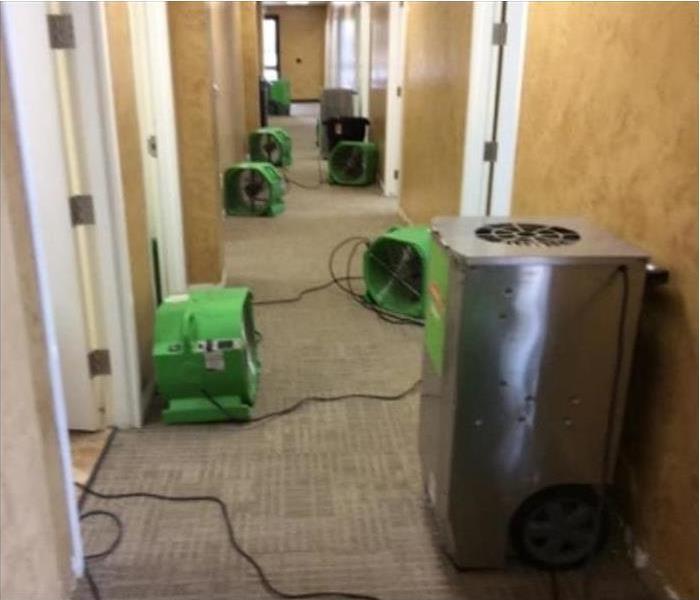 There is no job too small or too big for SERVPRO of Lake Conroe, Magnolia & Cleveland.
There is no job too small or too big for SERVPRO of Lake Conroe, Magnolia & Cleveland.
3 Requirements to Become a Preferred Vendor
Picking the right vendor to repair a home after a fire, flood or natural disaster isn’t always as easy as it seems. When there are so many emergency restoration specialists listings in Conroe, TX, how do you know which one is the right choice for your clients? An insurance agent should have preferred vendors to whom he or she refers clients who are in need of home repair. When you choose a preferred vendor, you know it meets at least three qualifications.
1. Trustworthy Technicians
To be part of a vendor program, a restoration company has to have a solid track record of hiring reliable experts and conducting business ethically. There are several common trademarks of trust, including:
- General liability coverage
- Background checks
- High customer satisfaction ratings
In order to receive a referral from the corporate call center at SERVPRO, for example, a franchise has to meet 21 different guidelines. When a company holds its own franchises to a high standard, it is more likely to become a preferred vendor with an insurance company.
2. Superior Service
Knowledge and skills go hand in hand when it comes to being a preferred vendor. As an insurance agent, you want your clients to hire experts who get the job done correctly the first time because that costs the insurance company less money. Technicians who have gone through an IICRC-certified training program are more likely to have the experience necessary to provide the excellent service needed.
3. Precise Documentation
Processing a successful claim requires accurate records. SERVPRO keeps track of every detail of the remediation and restoration process, from the response time to the final estimate for the job. The Claims Information Center makes the insurance adjuster’s job so much easier by providing all the documentation needed to assess the claim.
When clients need emergency repair service for their homes, they may ask you, their insurance agent, about preferred vendors. Working with someone the insurance company already trusts can ensure that clients get the best service possible.
3 Ways to Know How Many Fire Alarms You Need
2/20/2022 (Permalink)
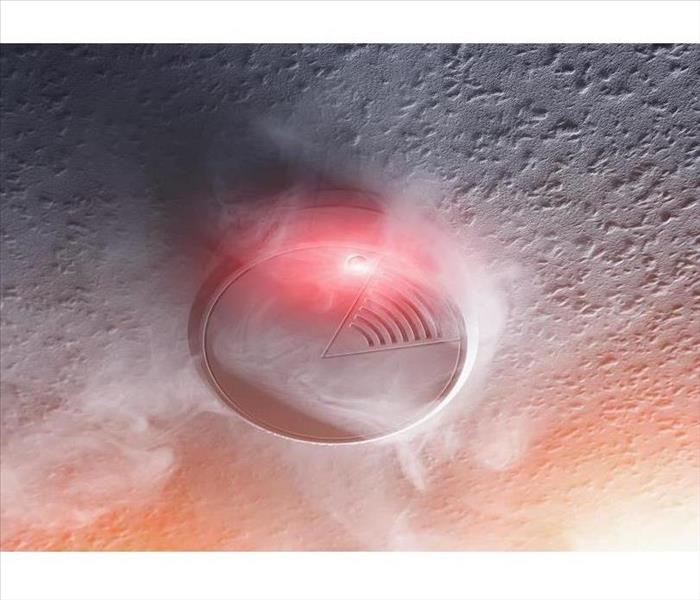 According to the NFPA you should have smoke alarms in every room.
According to the NFPA you should have smoke alarms in every room.
Most homeowners know that a smoke detector and a fire alarm are mainstays of keeping your home safe from disaster, but knowing how many you should have to be safe is another issue entirely. Is one per room enough? Read on to get pointers on how to protect your Cleveland, TX, home from fire damage with the proper number of alarms.
Types of Fire Detectors and Alarms
It may come as a surprise, but every fire sensor is not the same. The main options for protecting your home from fire include:
- Heat detectors, which include an element activated when a fixed temperature is reached
- Smoke alarms, which work by using special technology that reacts to the ions in high levels of smoke
Smoke detectors are among the most common and effective residential fire protection devices, but they’re only useful if they’re applied properly.
How Many Rooms Do You Have?
According to the National Fire Protection Association, you should have smoke alarms in every room, outside each sleeping area and on every level of the home. For a two-story, three-bedroom house, that means you’ll need at least five to be safe.
How Big Is Your Home?
On average, a smoke detector will cover about 900 square feet. Additionally, experts advise installing a fire alarm every 30 feet in straight runs, meaning a hallway or large, unobstructed room. Some states have specific requirements, so it’s worth it to do your research in addition to using this rule of thumb.
Don’t Forget the Basement
While it’s often an afterthought, especially if it’s unfinished, the basement of your home is just as susceptible to fire and smoke damage as any other room. Make sure your fire protection plan includes installing devices here.
Fortunately, a simple fire alarm is affordable and readily available, but you must know how to use one for it to work. Follow the above rules of thumb from fire damage experts to keep your home safe and secure.
How To Keep Pipes From Freezing
2/15/2022 (Permalink)
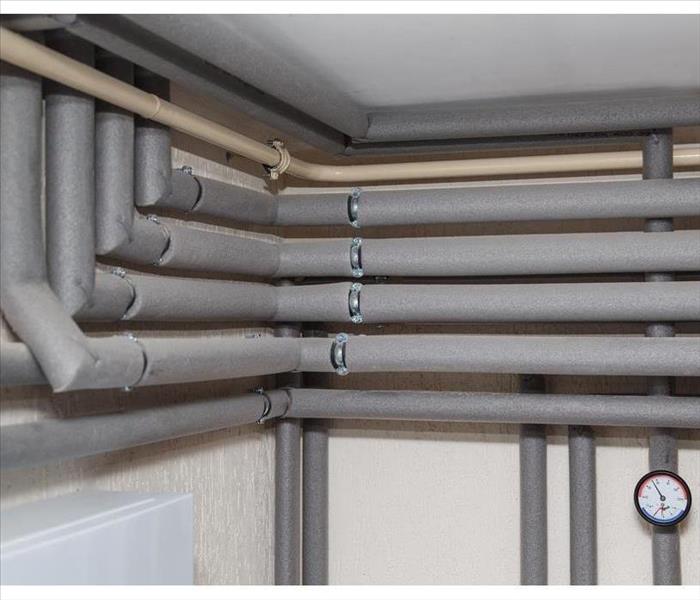 Keep your pipes covered with insulation.
Keep your pipes covered with insulation.
Three Tips To Keep From Having Frozen Pipes
Waterline repair in Magnolia, TX can be overwhelming and expensive, so taking care of your pipes during freezing weather is vital to preventing costly repairs. When water freezes in pipes, it creates incredible amounts of pressure that can cause the metal to crack and even burst. When you are having particularly cold weather, use these three tips to keep from having frozen pipes.
1. Run water through faucets periodically. Moving water does not freeze, so it is vital to keep the liquid moving through the pipes during cold weather. Constantly letting water drip from kitchen and bathroom faucets keeps the water flowing just enough to prevent it from getting too cold. Alternatively, run water at full blast for a couple of minutes every hour to keep it moving through the pipes.
2. Maintain a steady temperature. Many homeowners lower their heat at night in an effort to save money on their electricity bill, but doing so could cause your pipes to weaken. Changing temperatures may affect the metal by allowing it to become too cold, so keeping the thermostat at one temperature can help reduce the amount of stress on the pipes. Even if you will be away from home during freezing weather, set the thermostat above 55°F to keep from having frozen pipes.
3. Keep pipes warm. Most pipes are housed in hidden locations with little insulation, so they are likely to freeze. Open cabinet doors to allow warm air to circulate freely around the pipes, or wrap warm towels around pipes to help insulate them. Both methods help keep pipes warm, which reduces the risk of the water inside them becoming cold enough to freeze.
Frozen pipes are never fun to deal with, but with proper care and precautions, you may be able to prevent them from freezing. Using these three tips may help you avoid costly water line repair and keep pipes functioning correctly.



 24/7 Emergency Service
24/7 Emergency Service


































